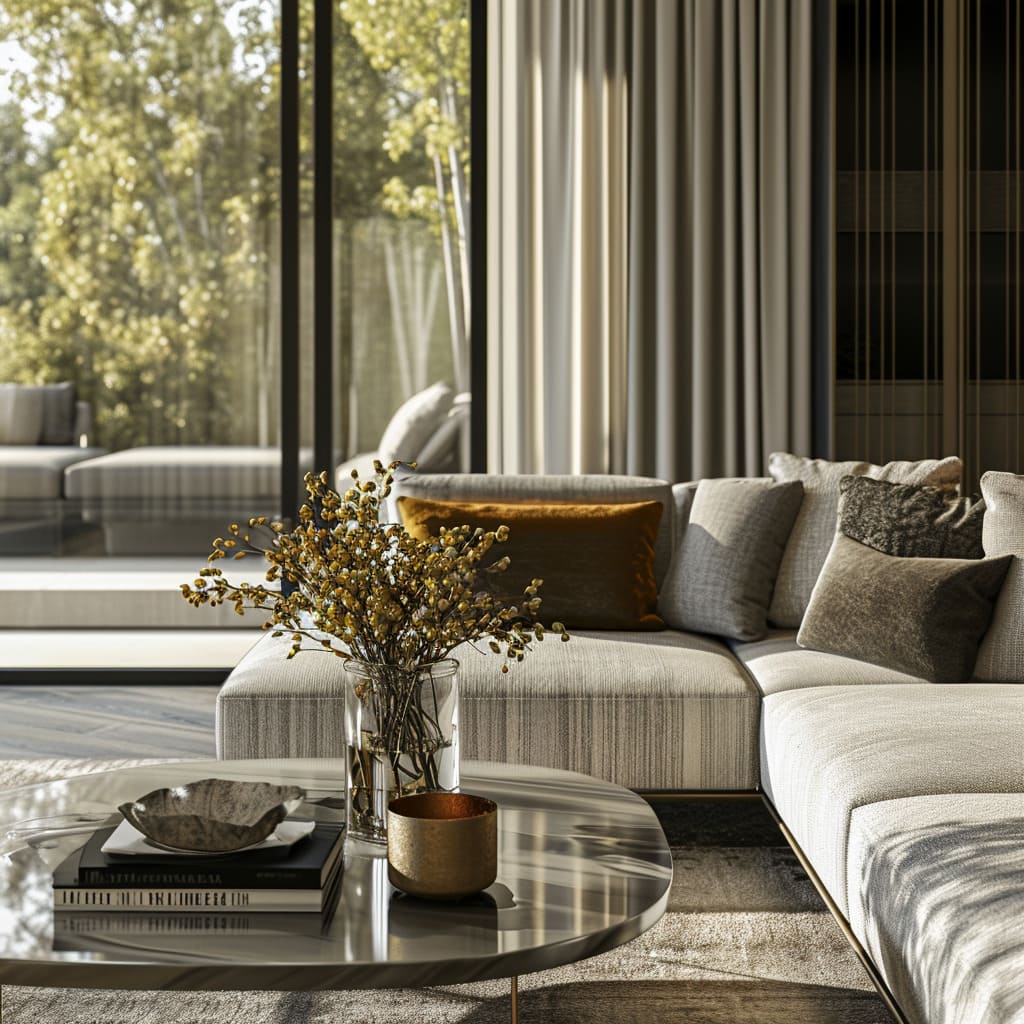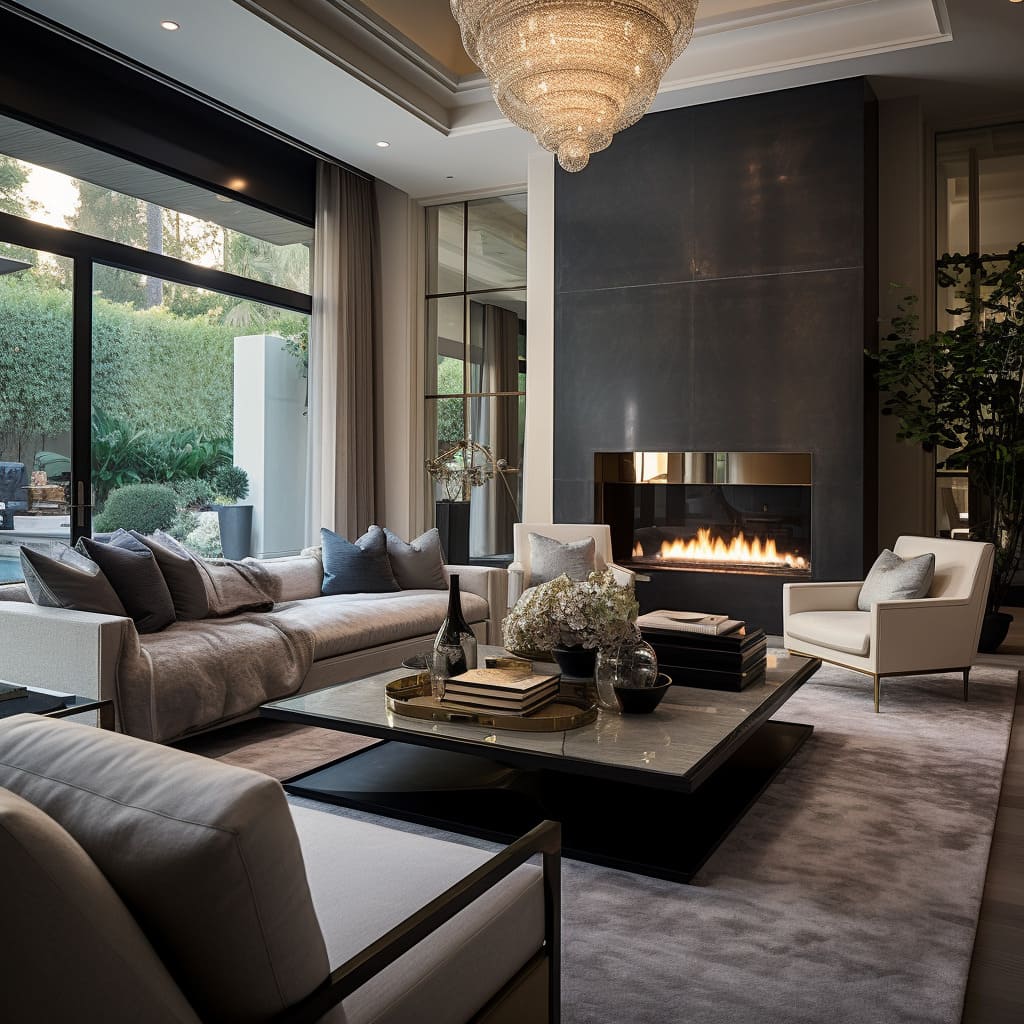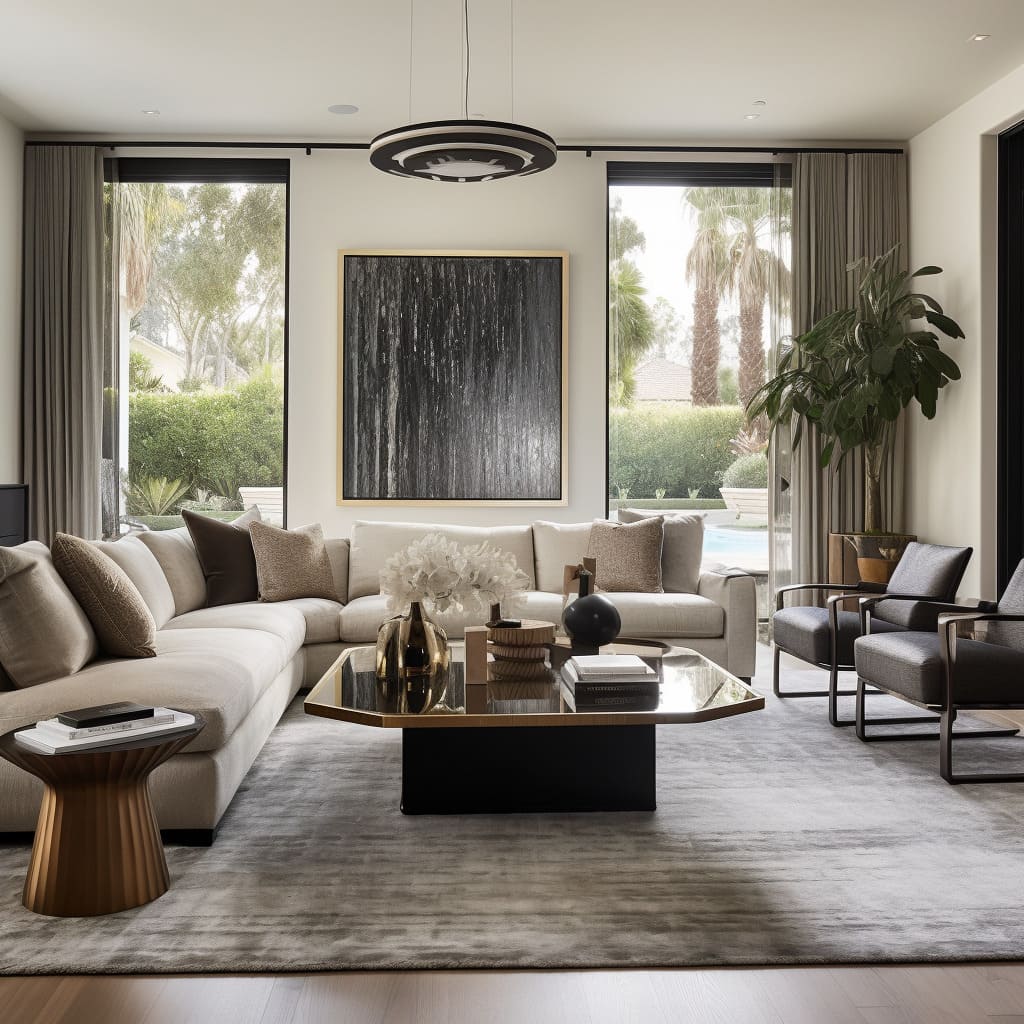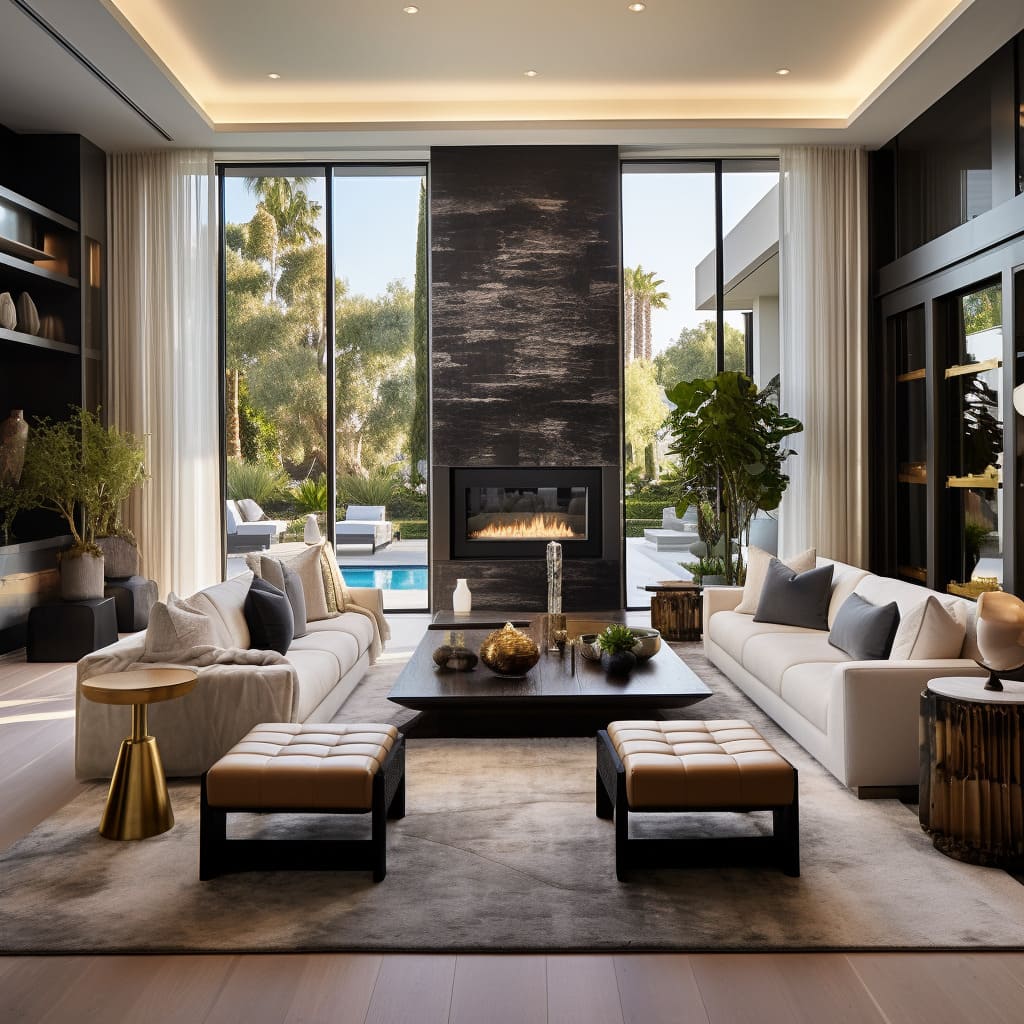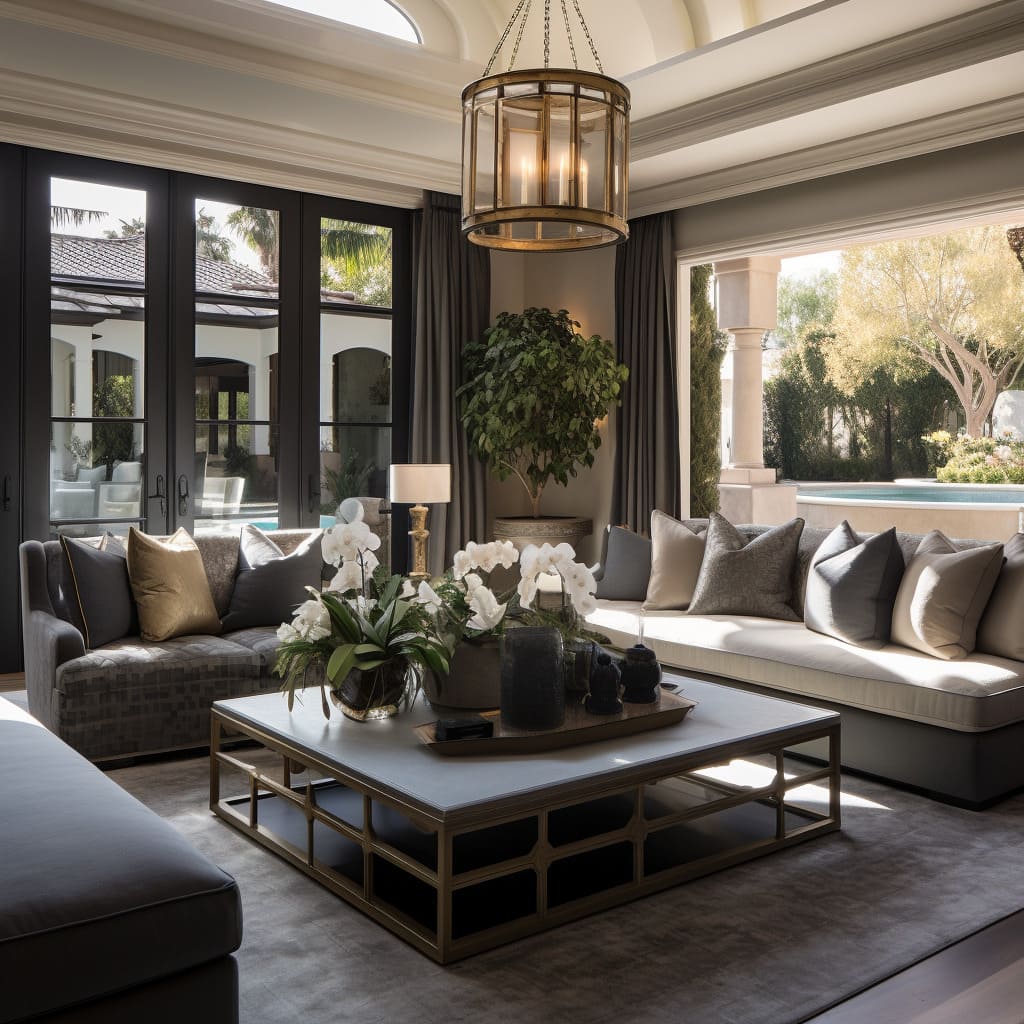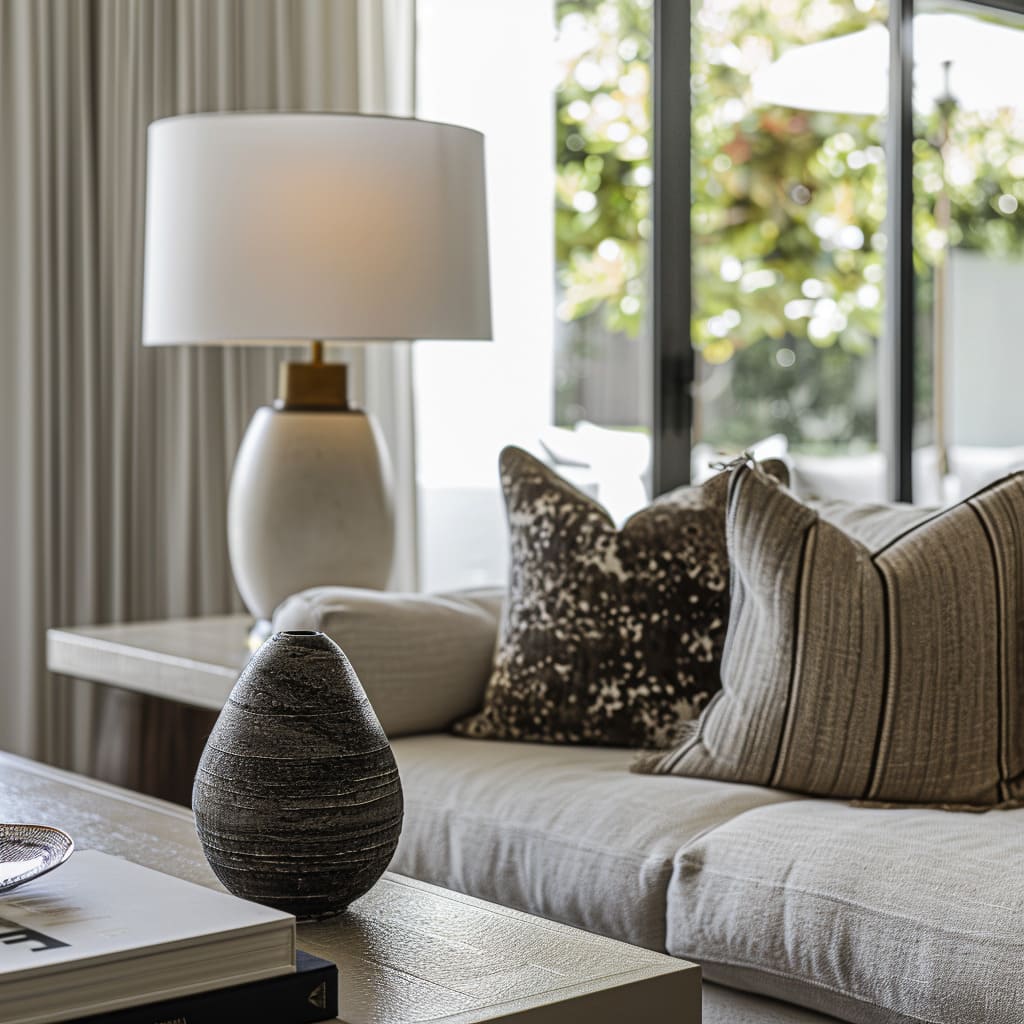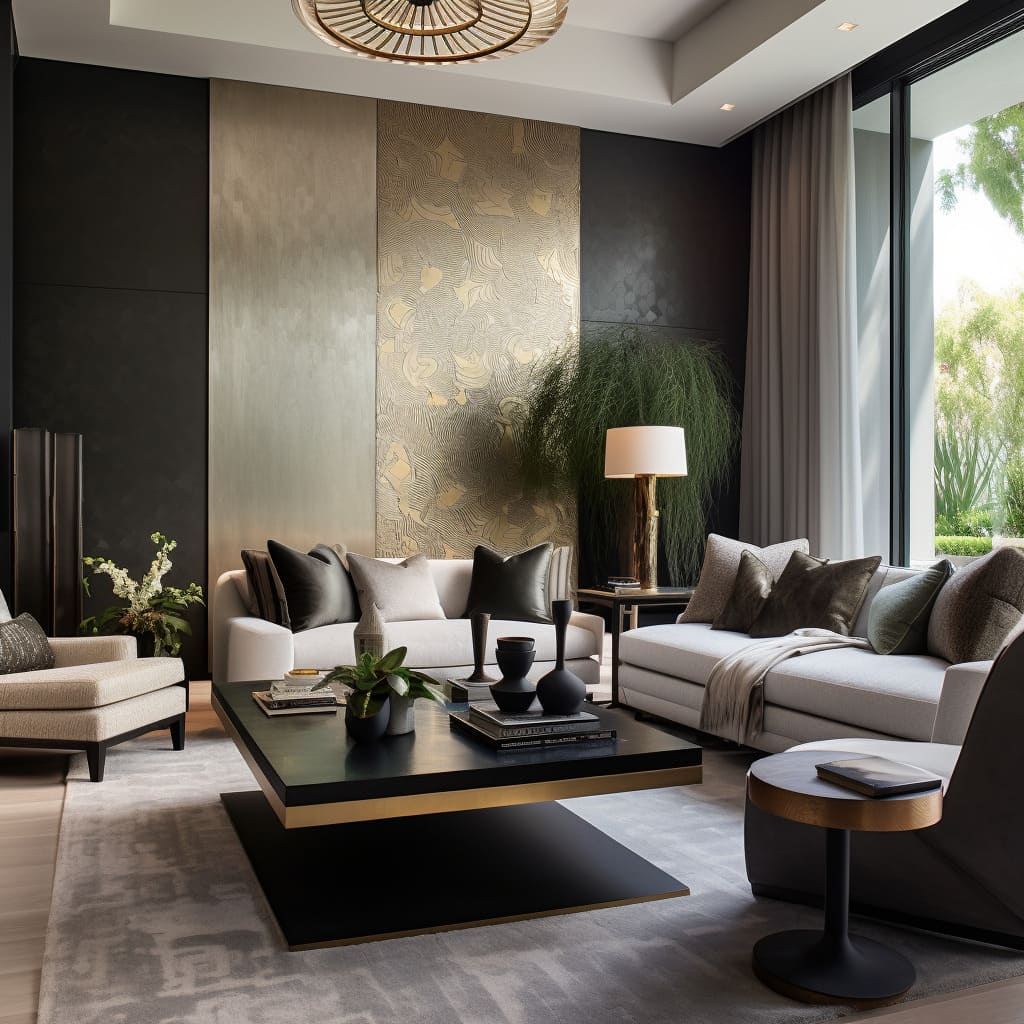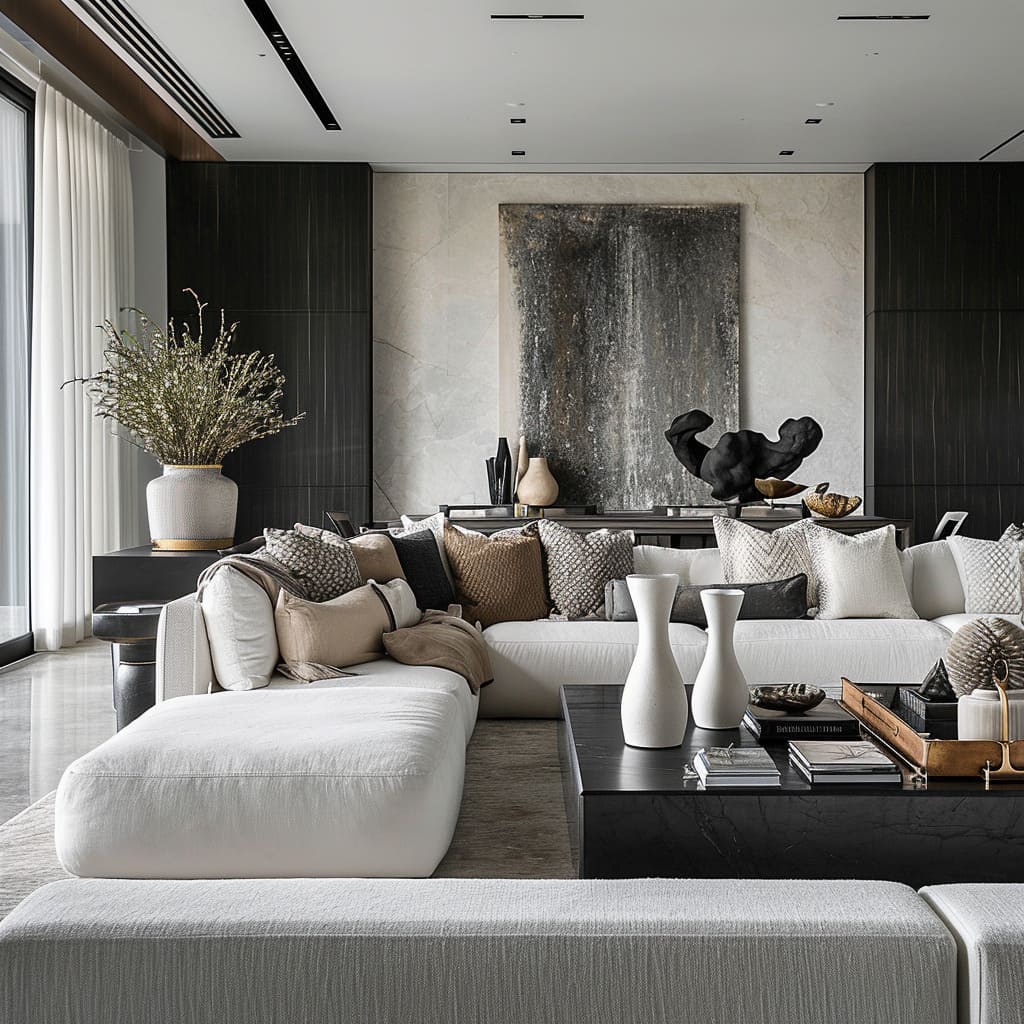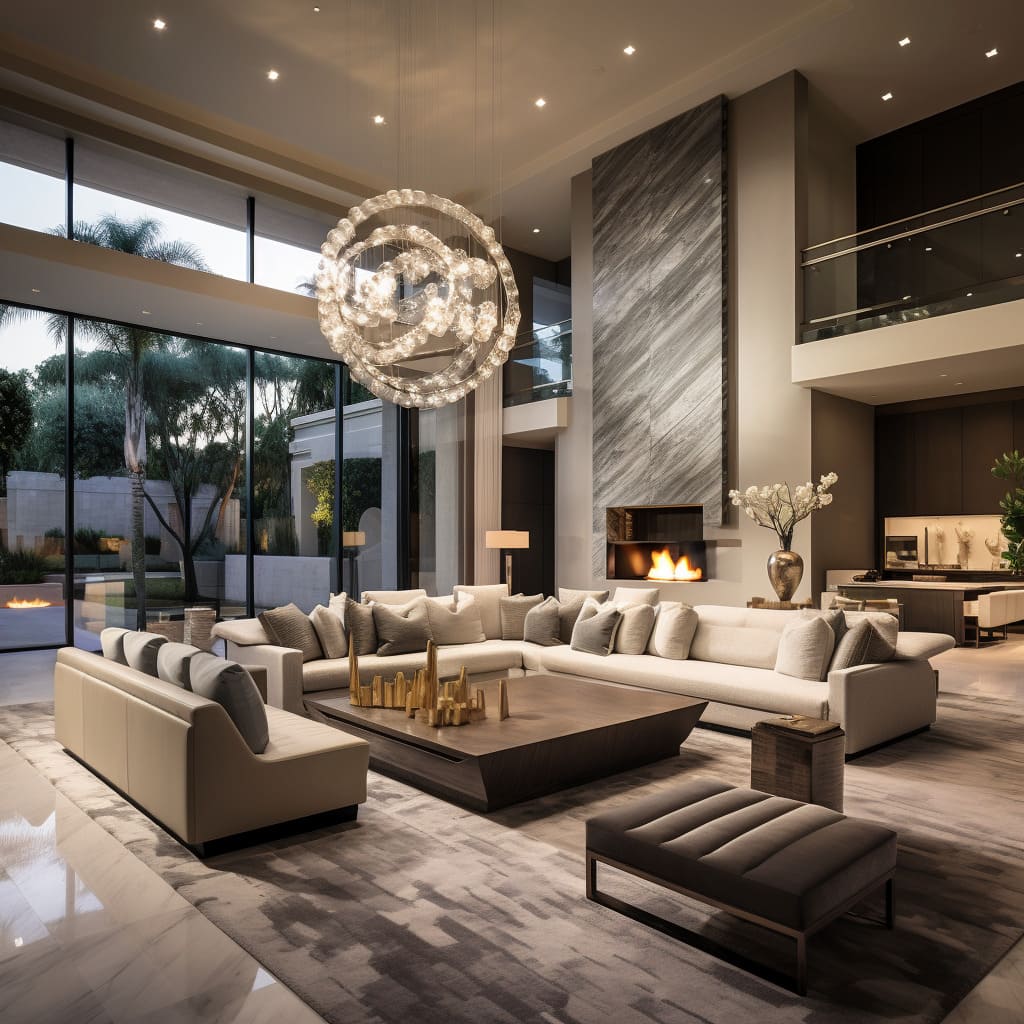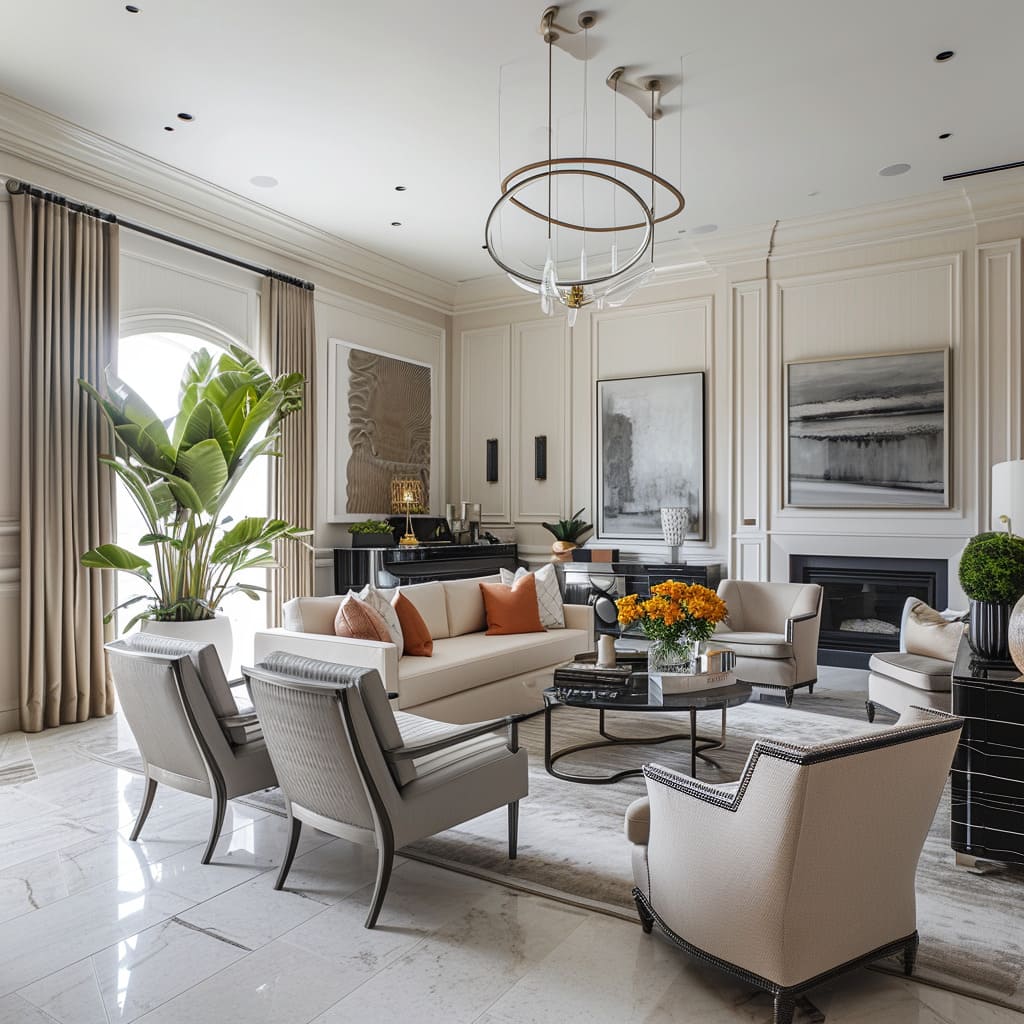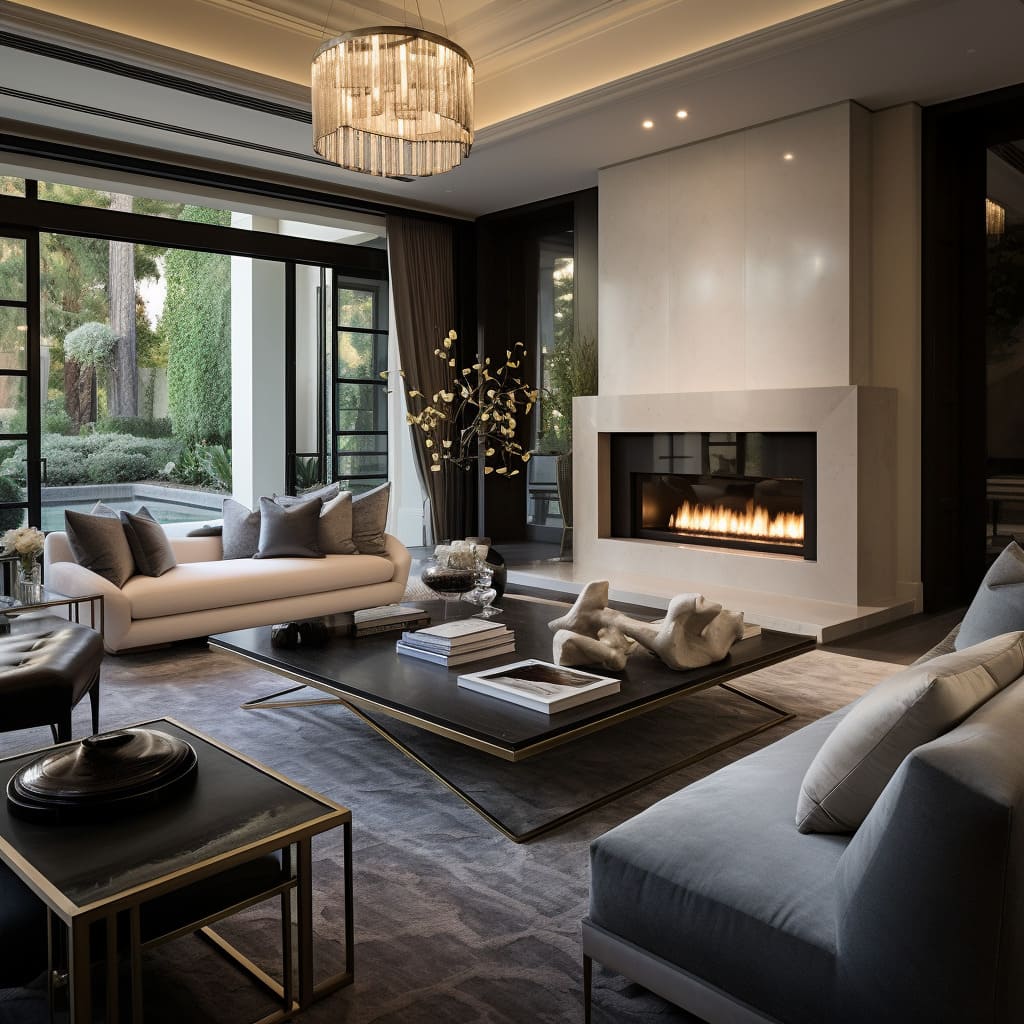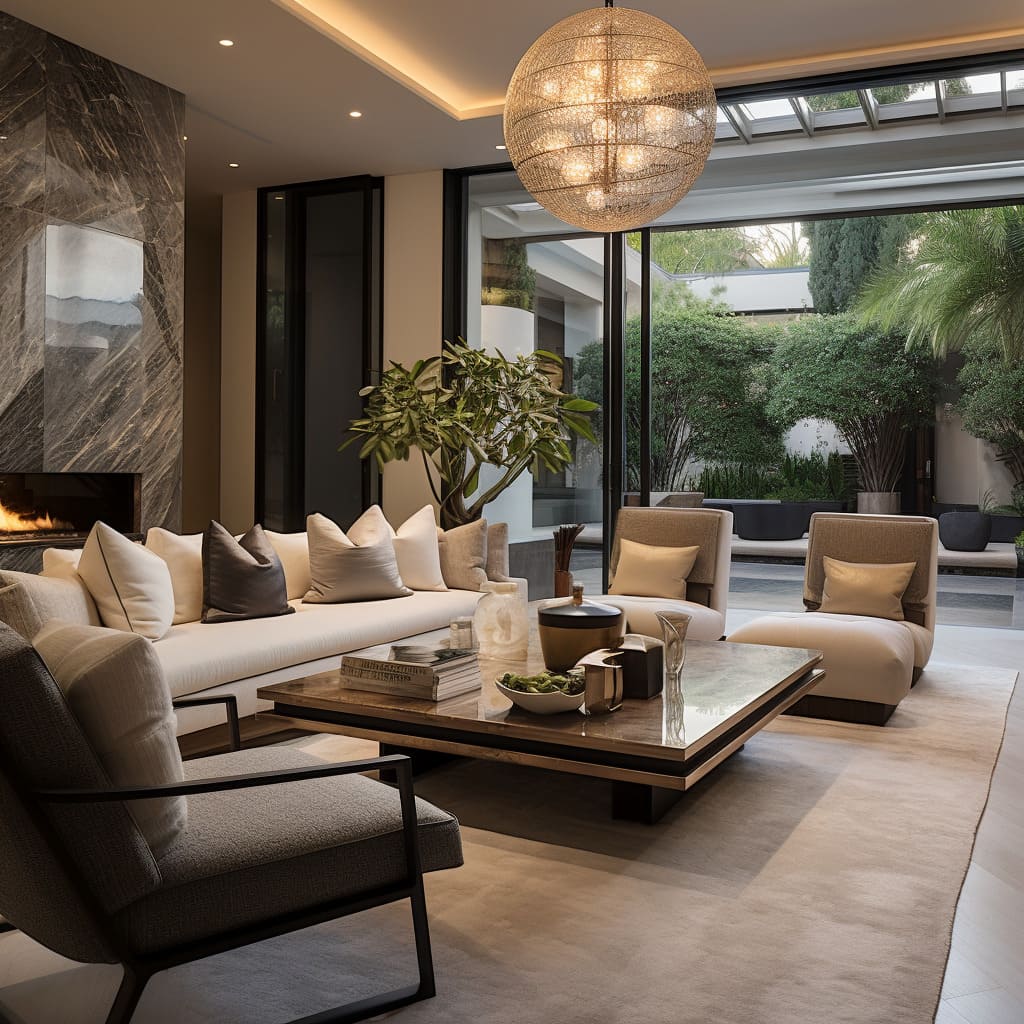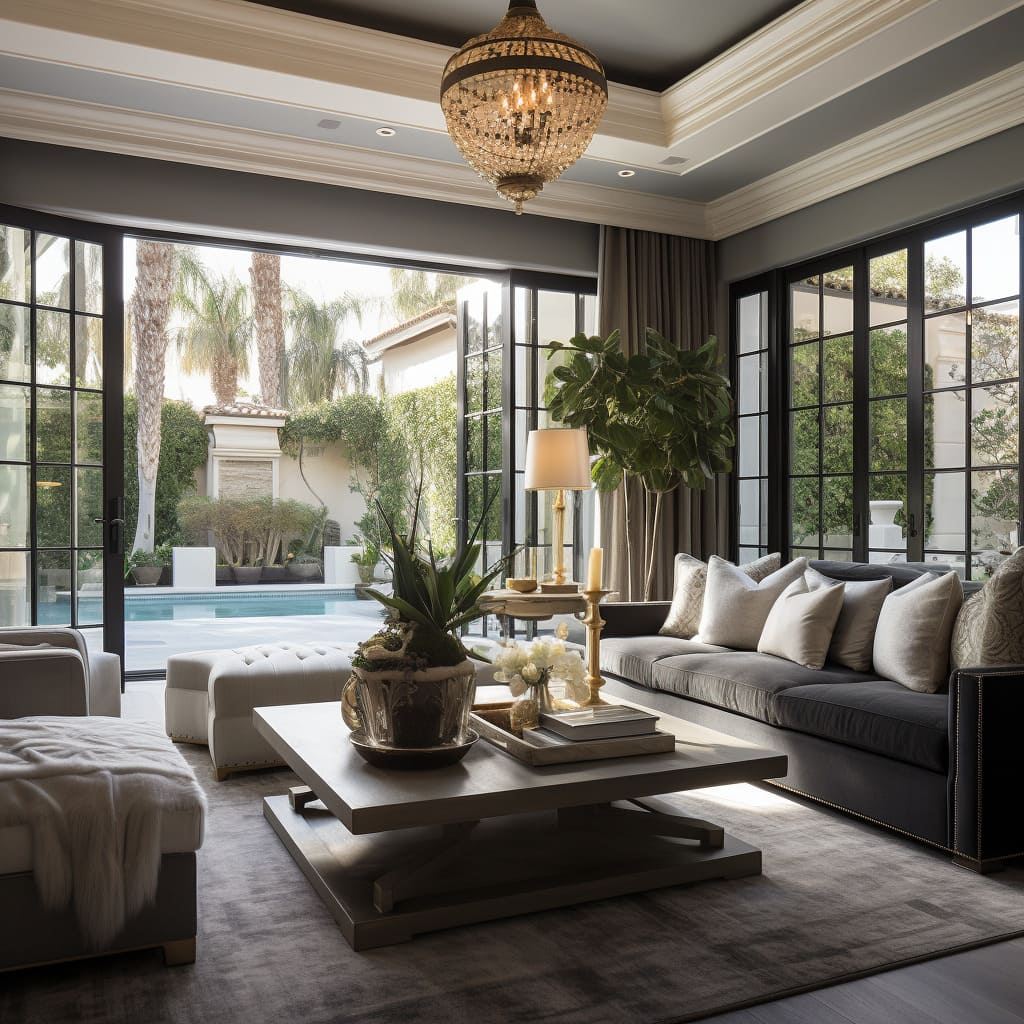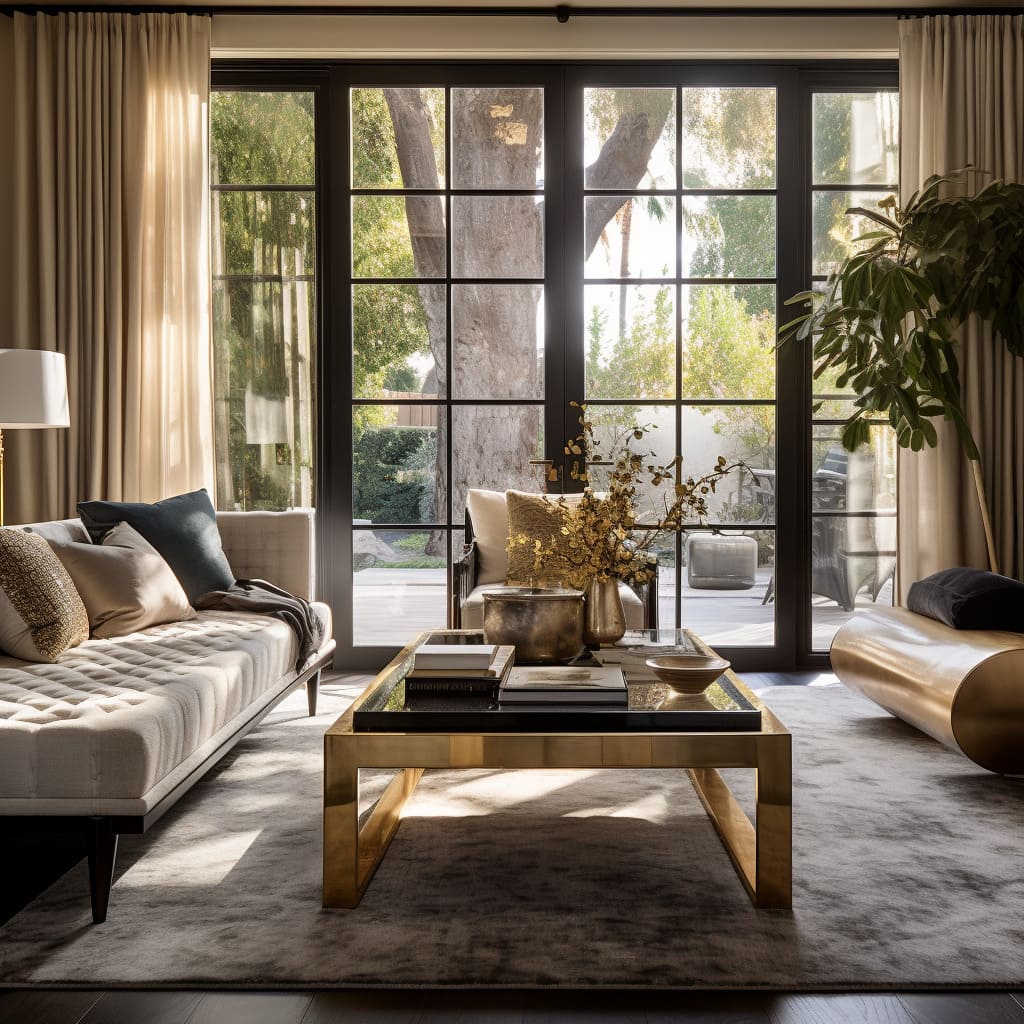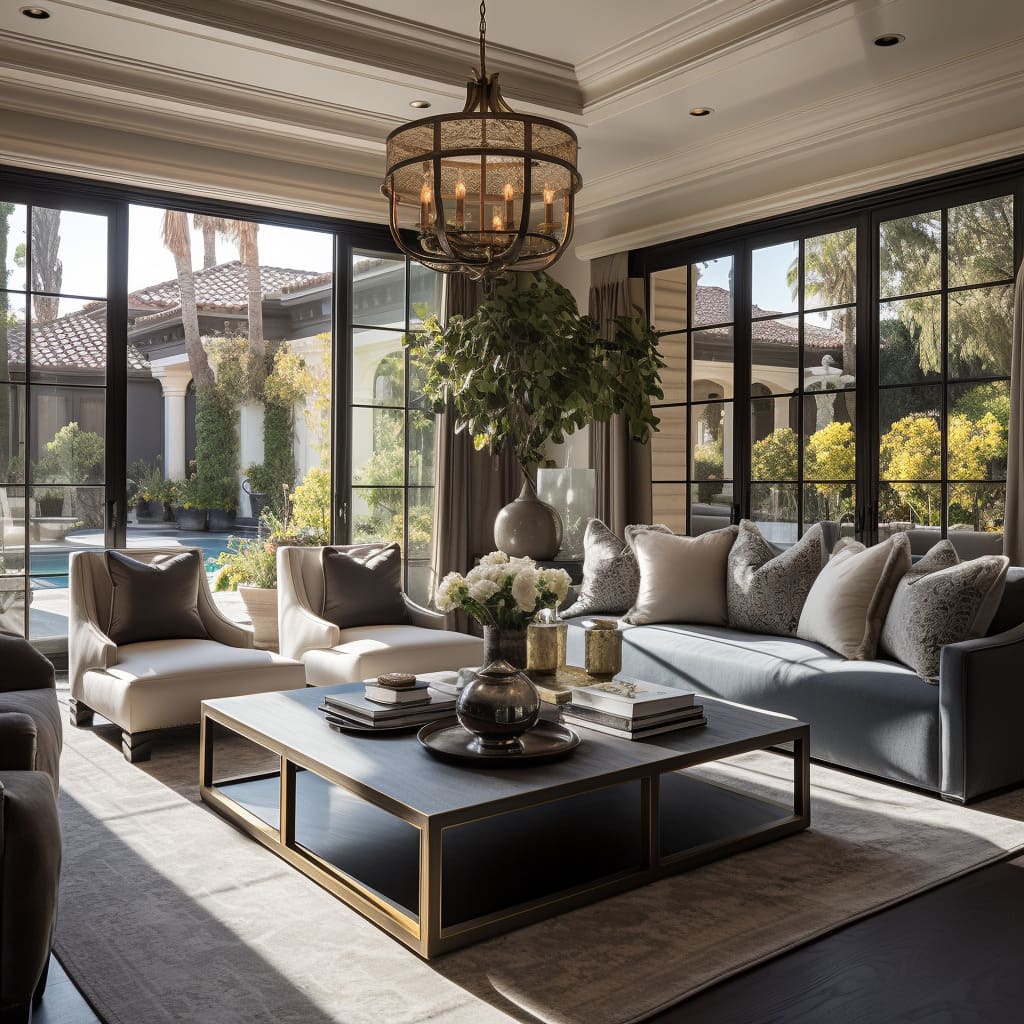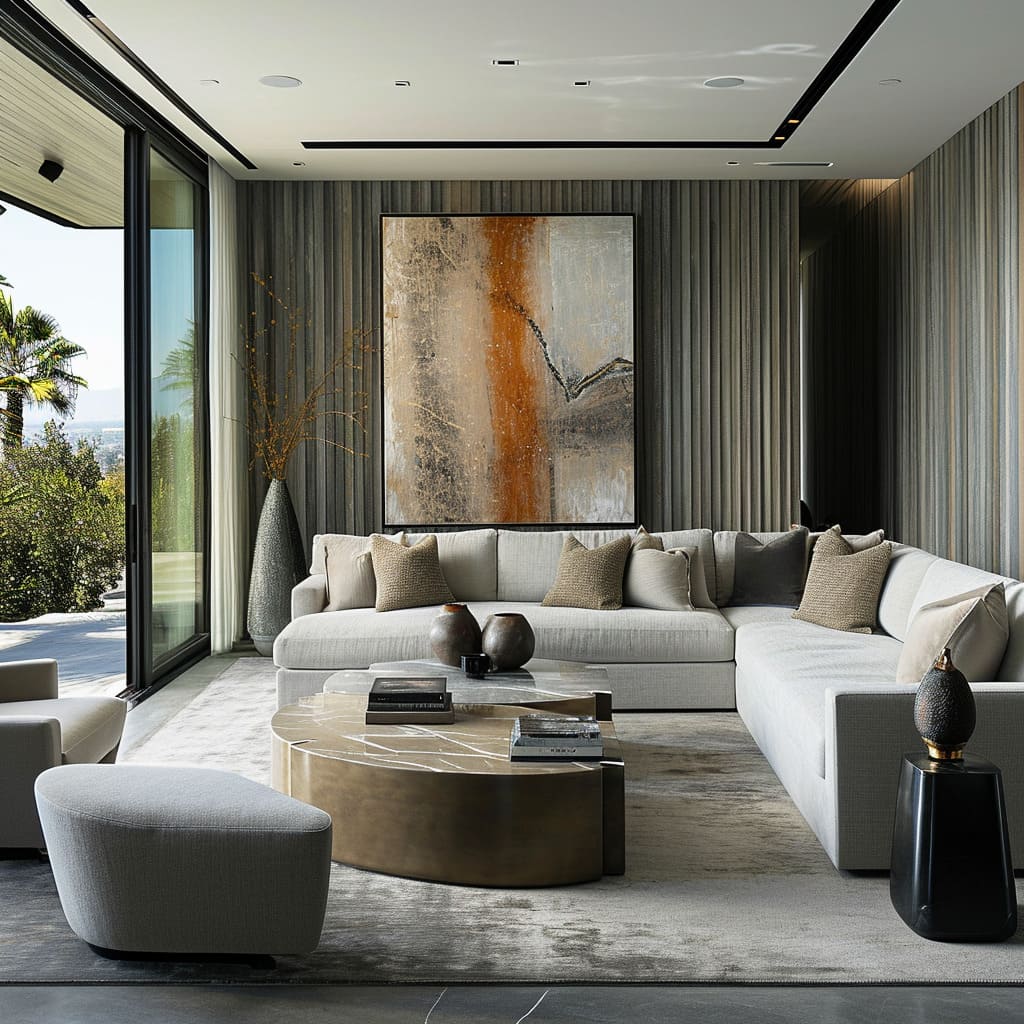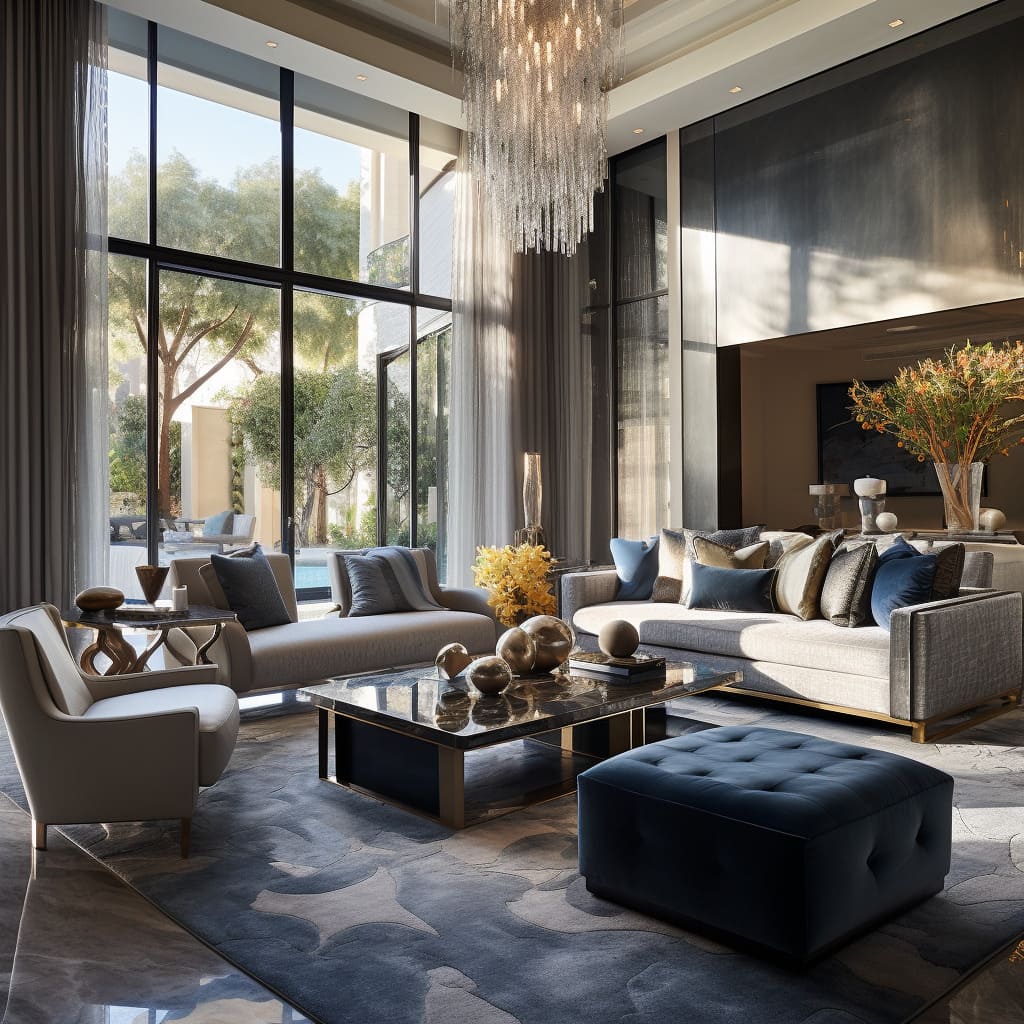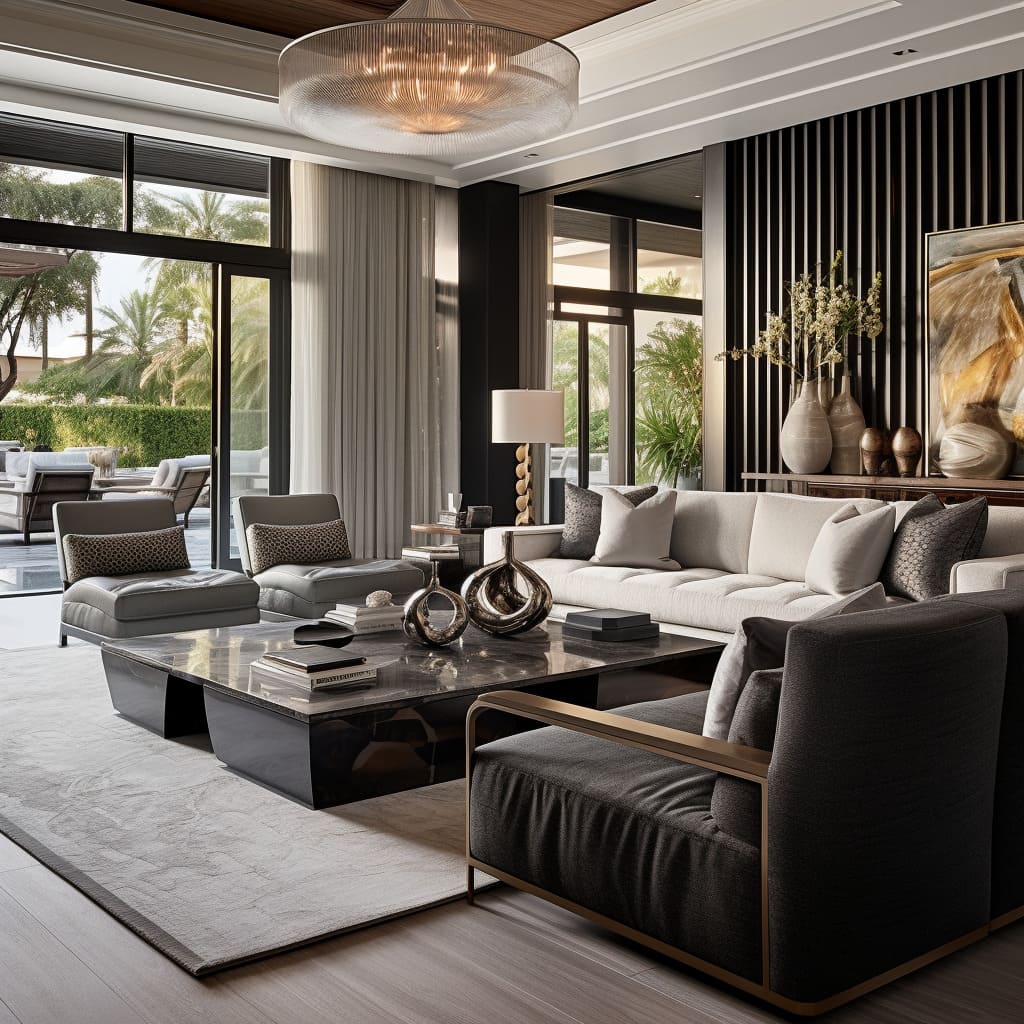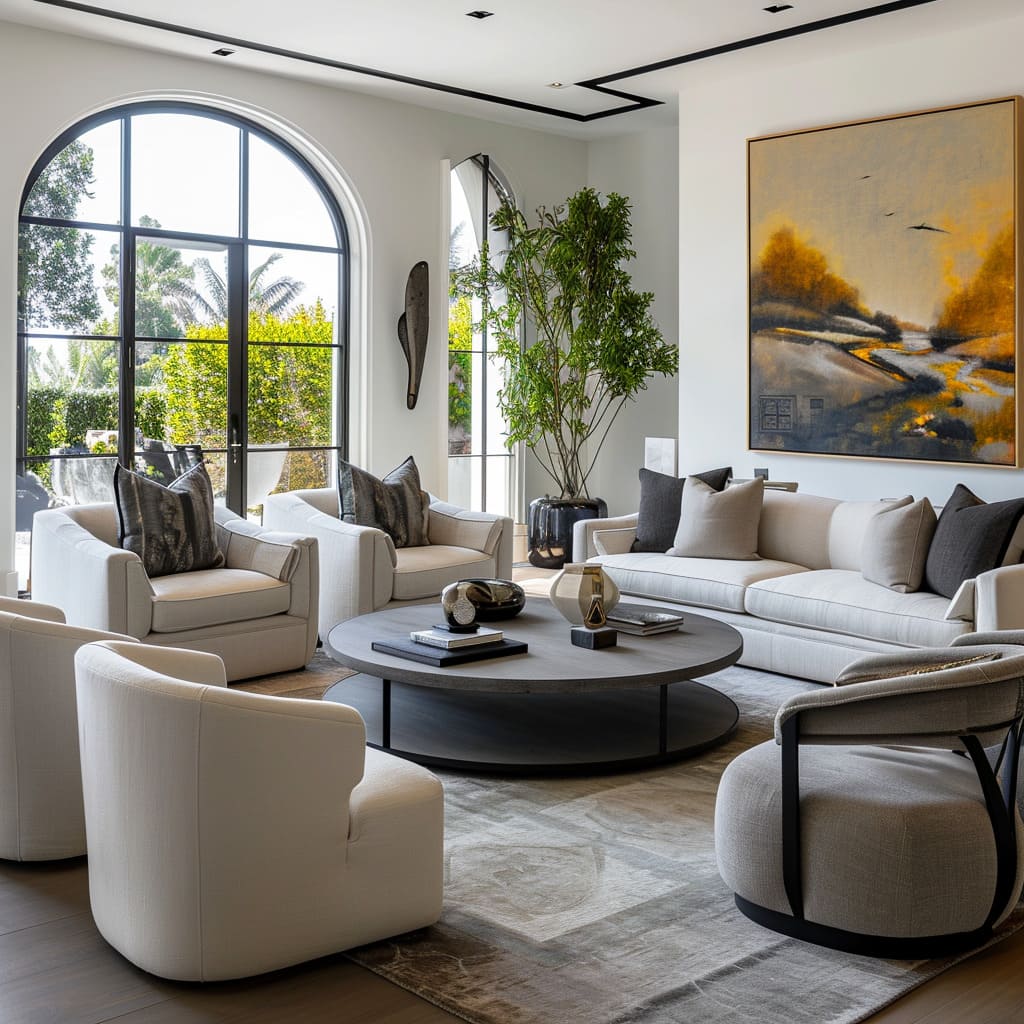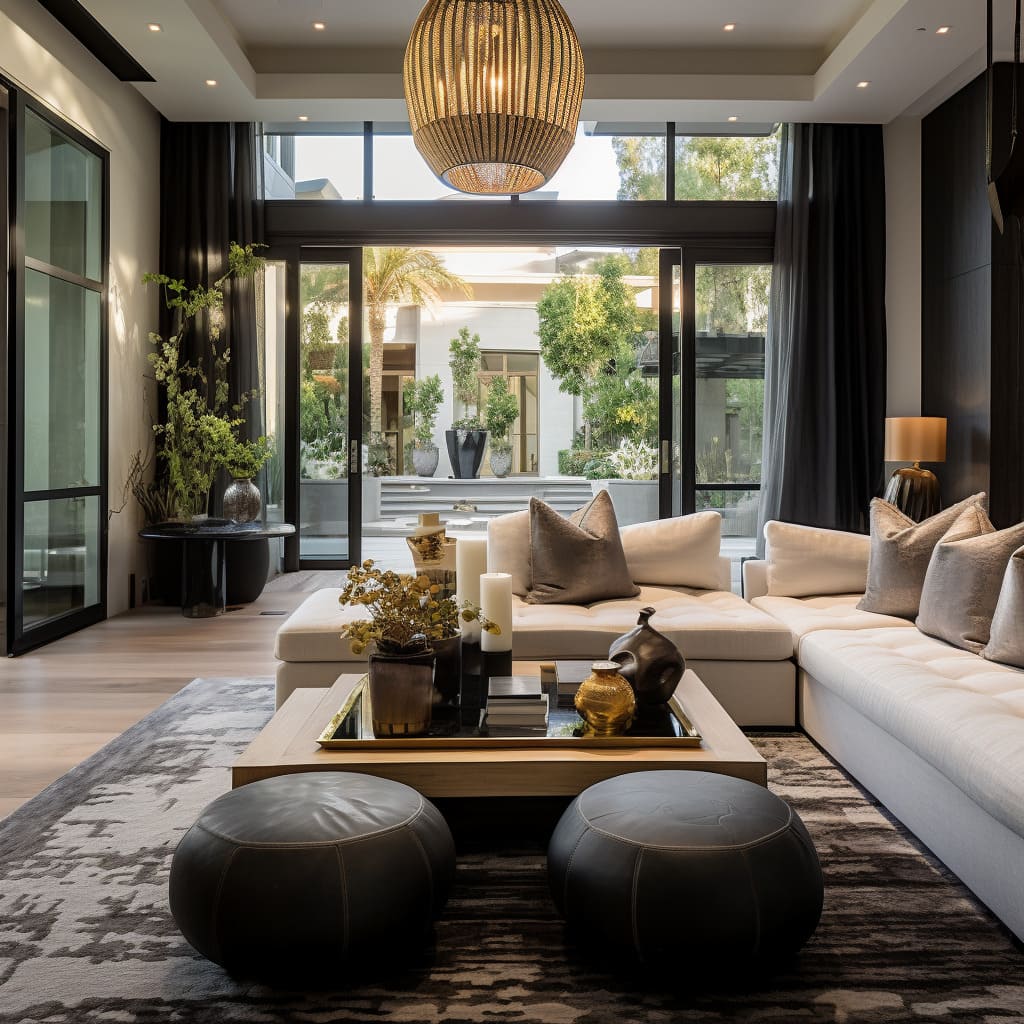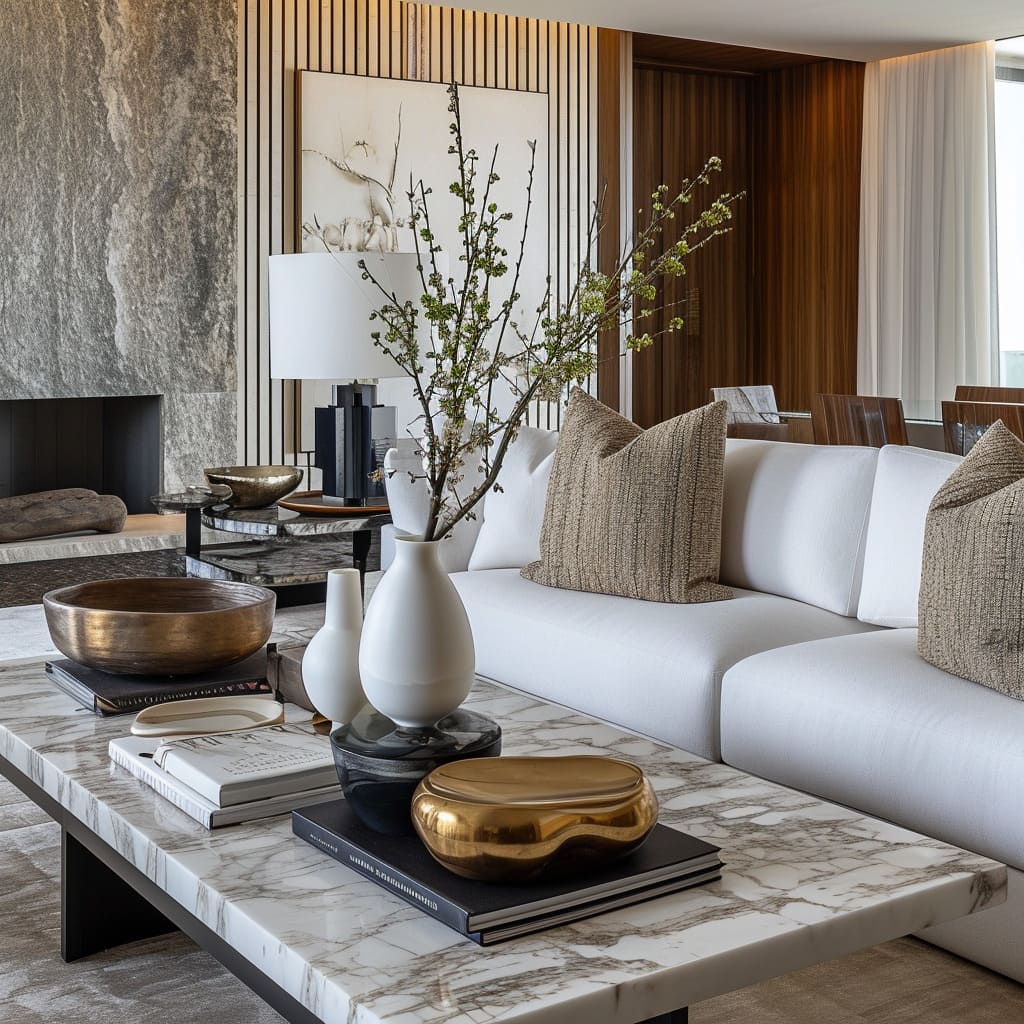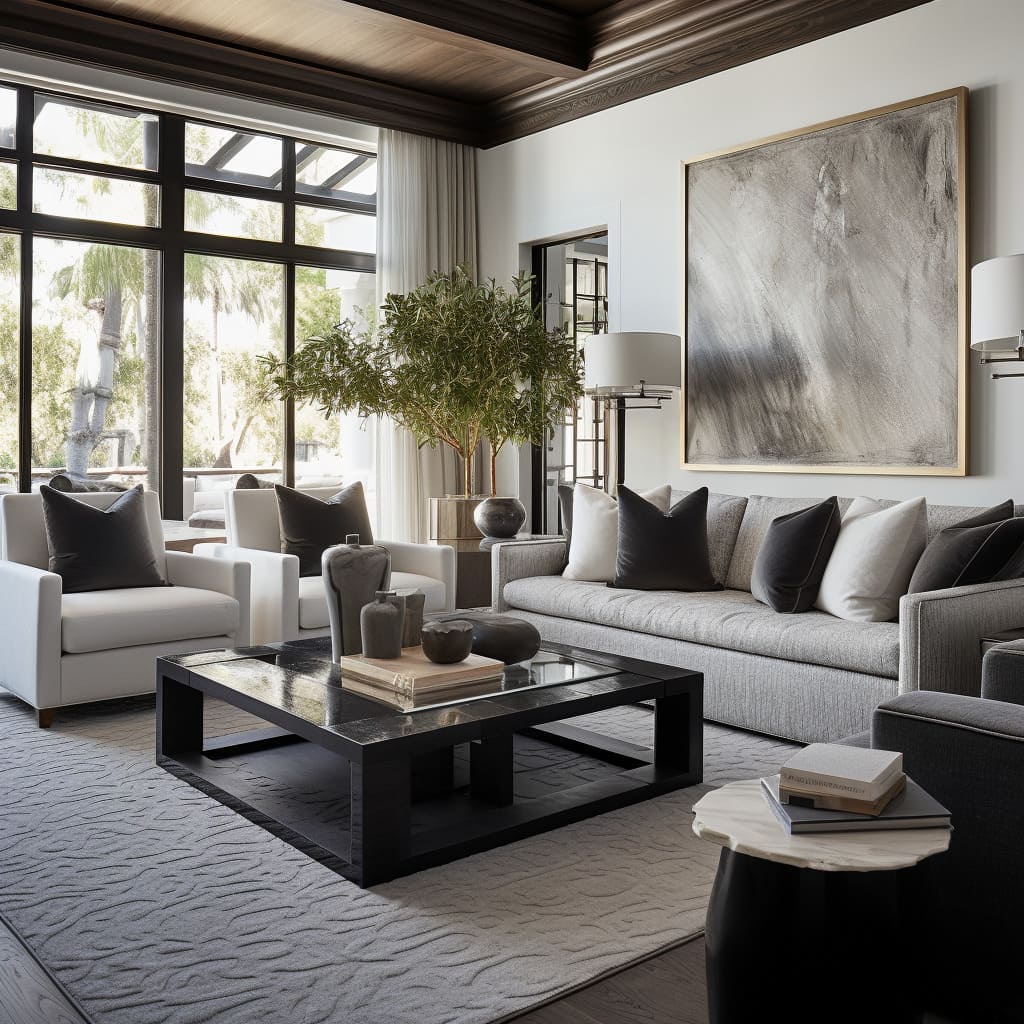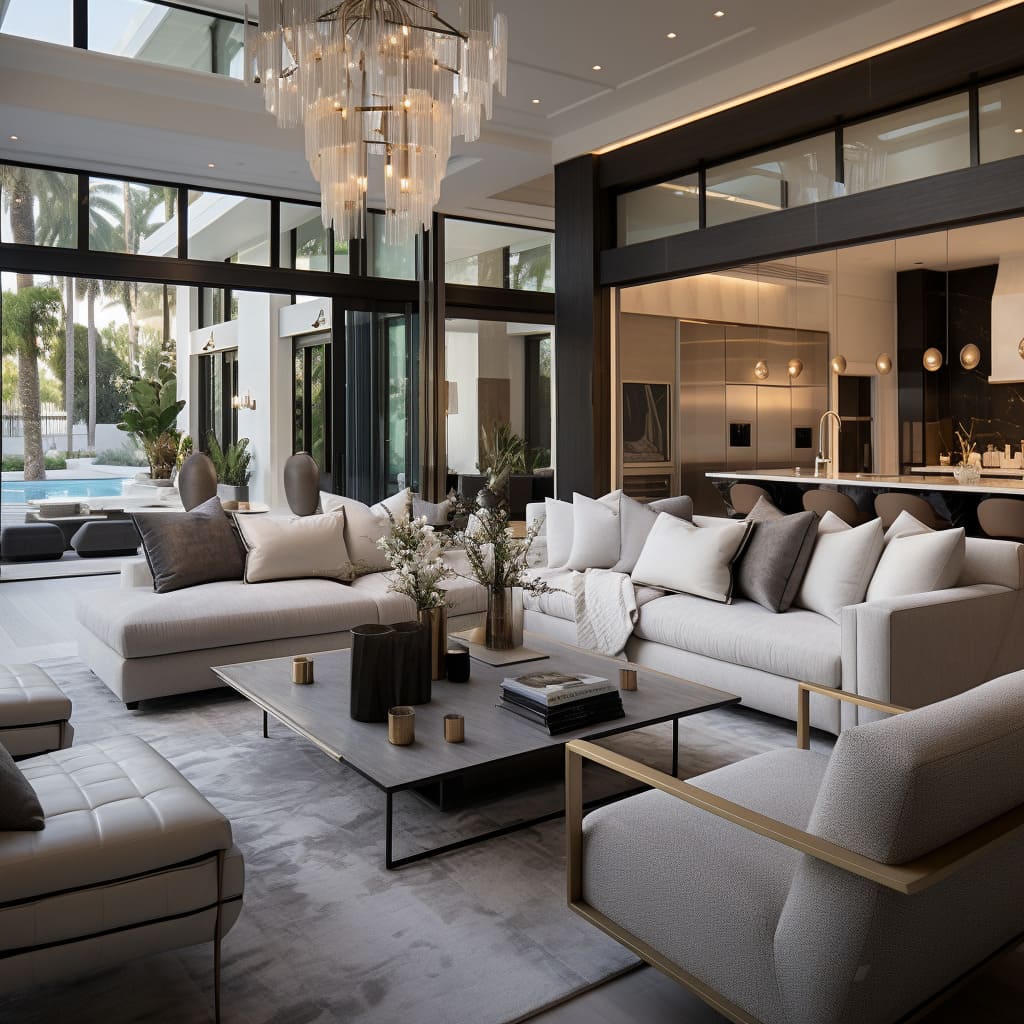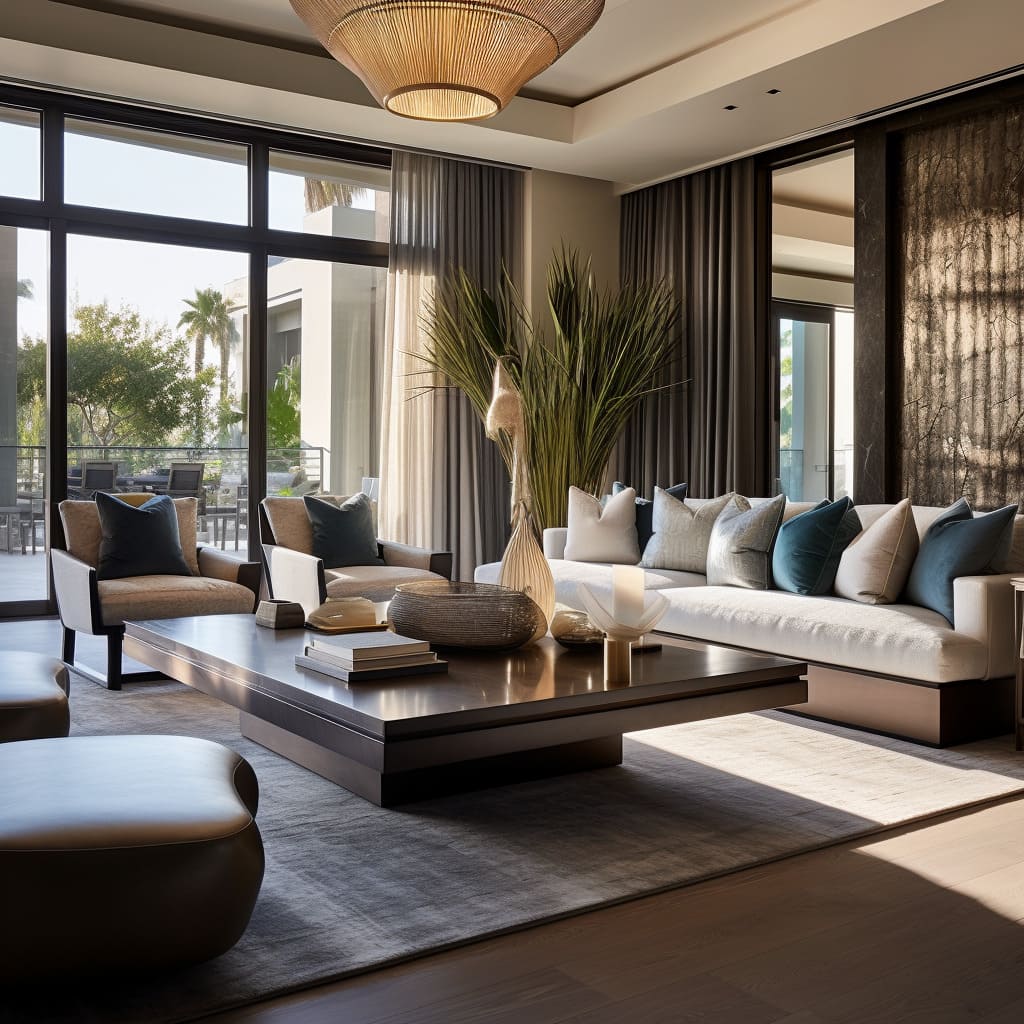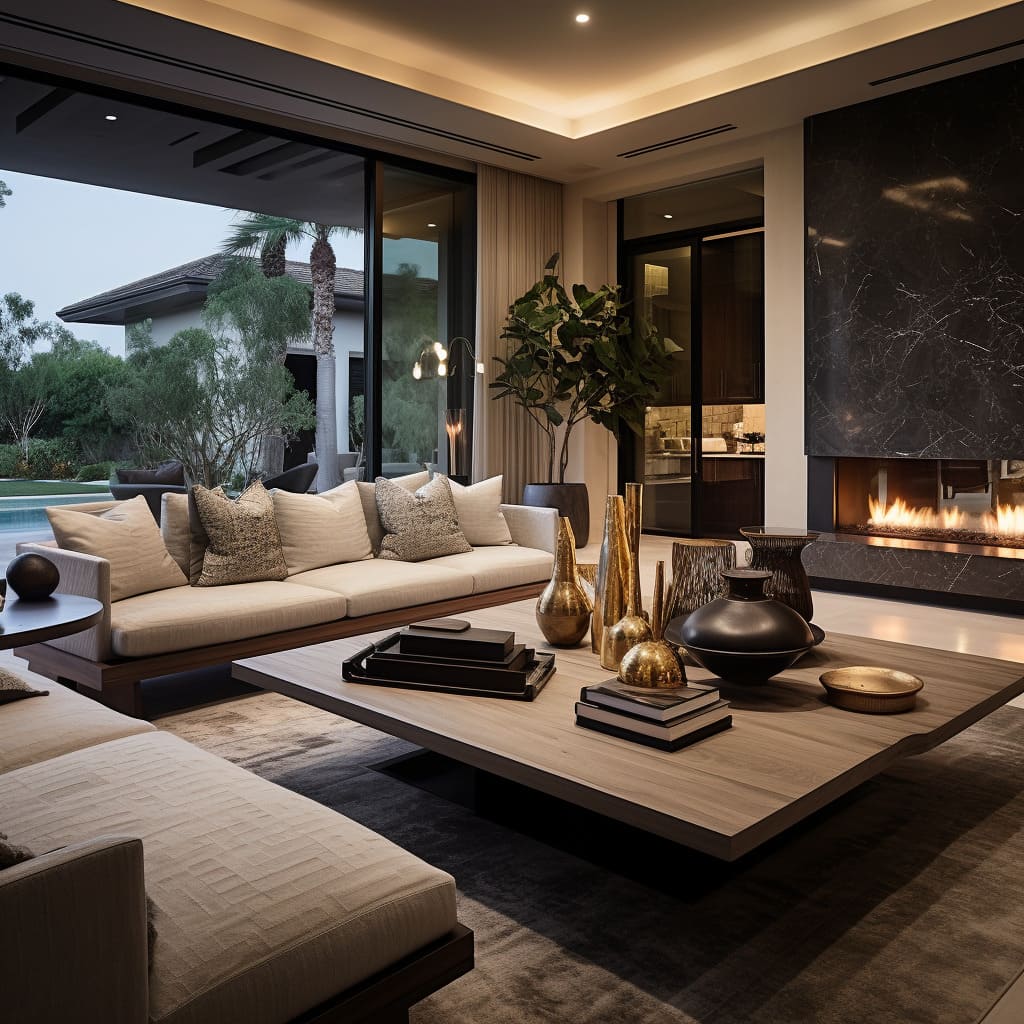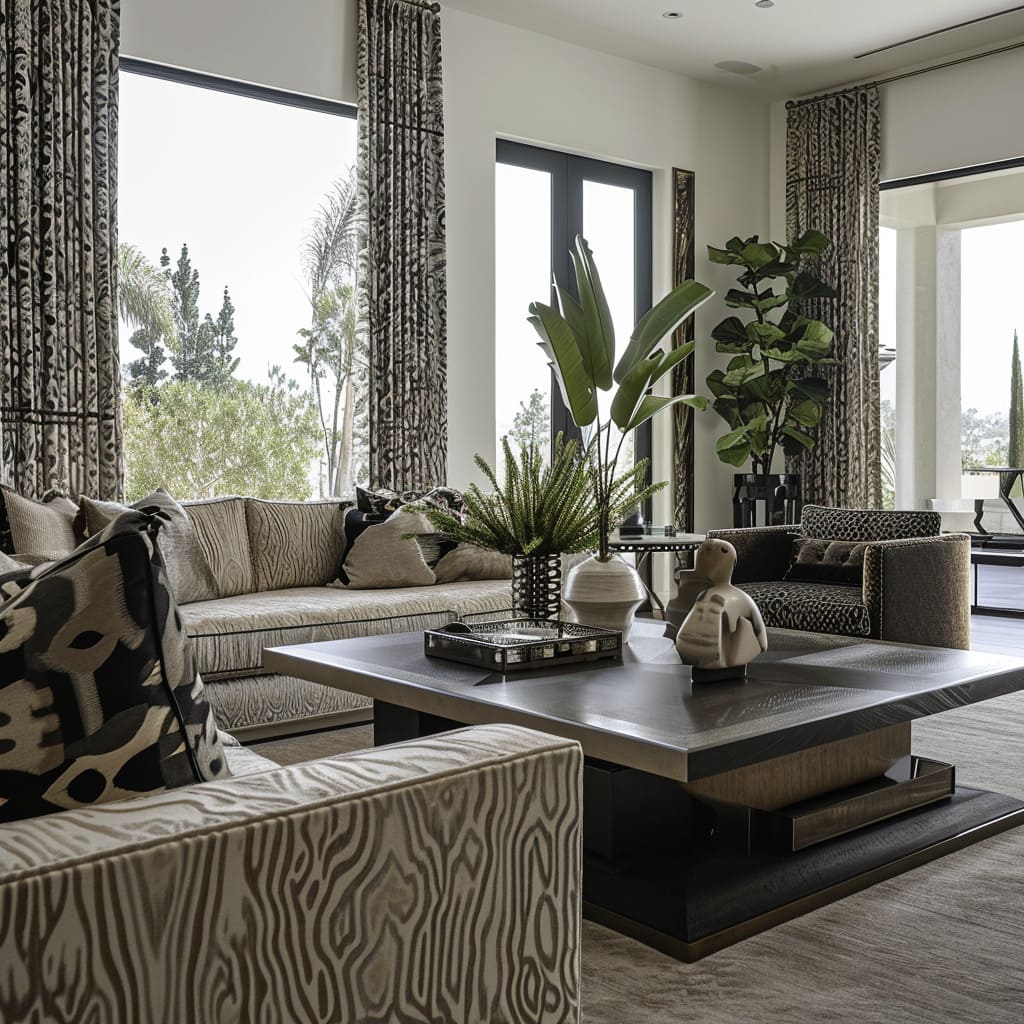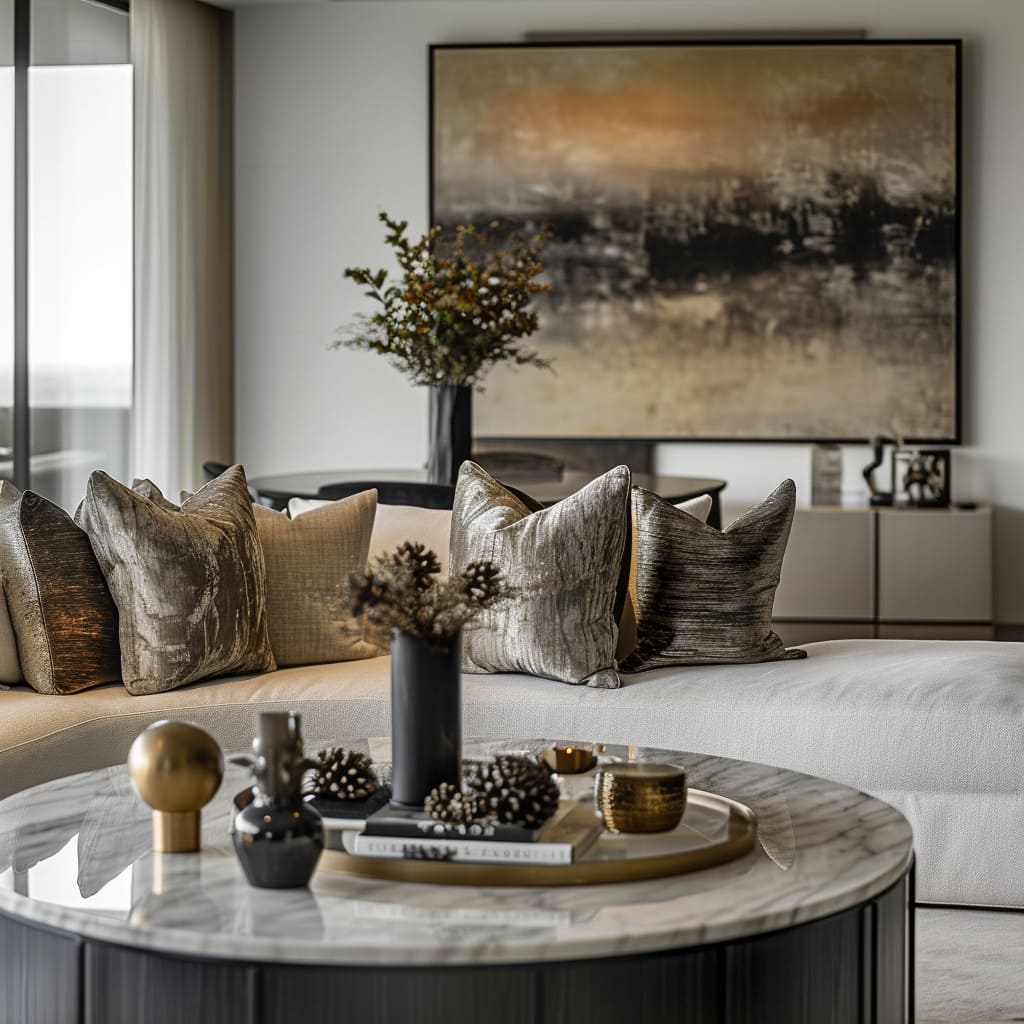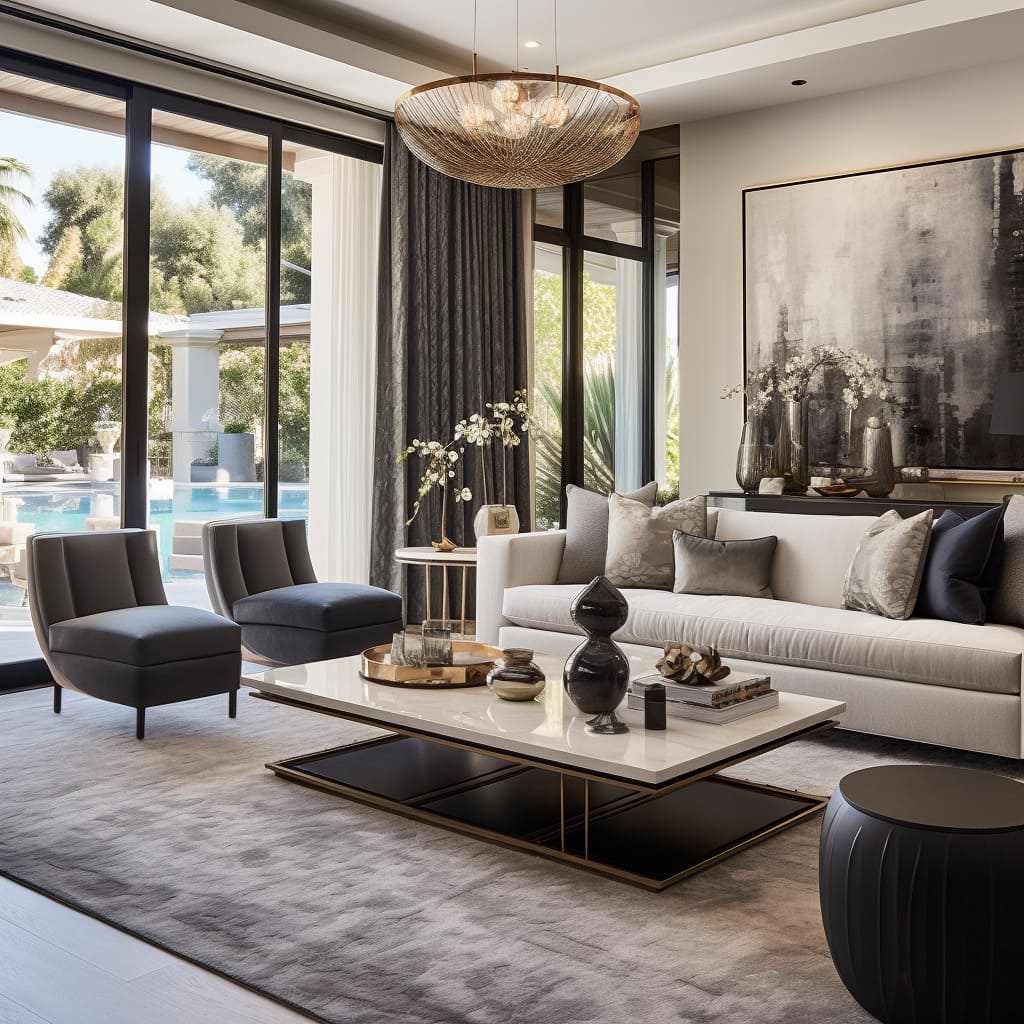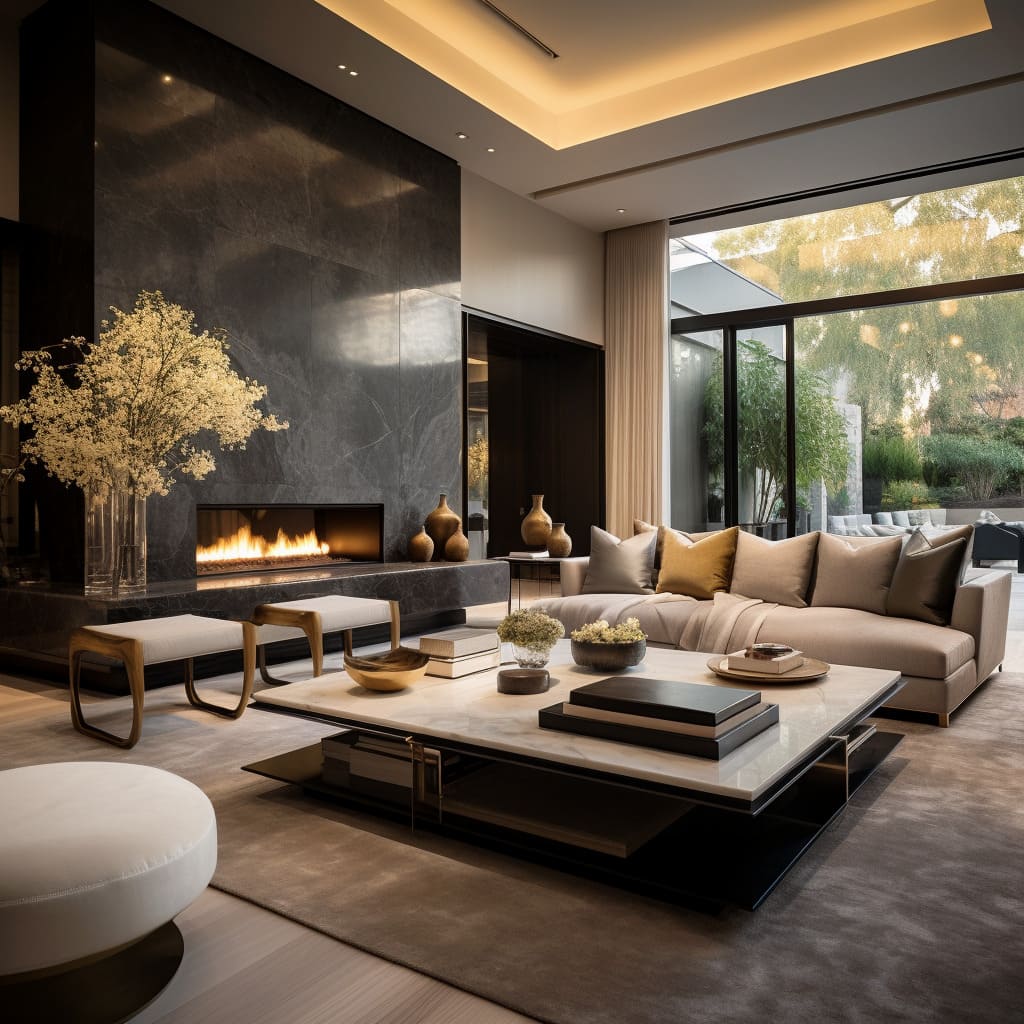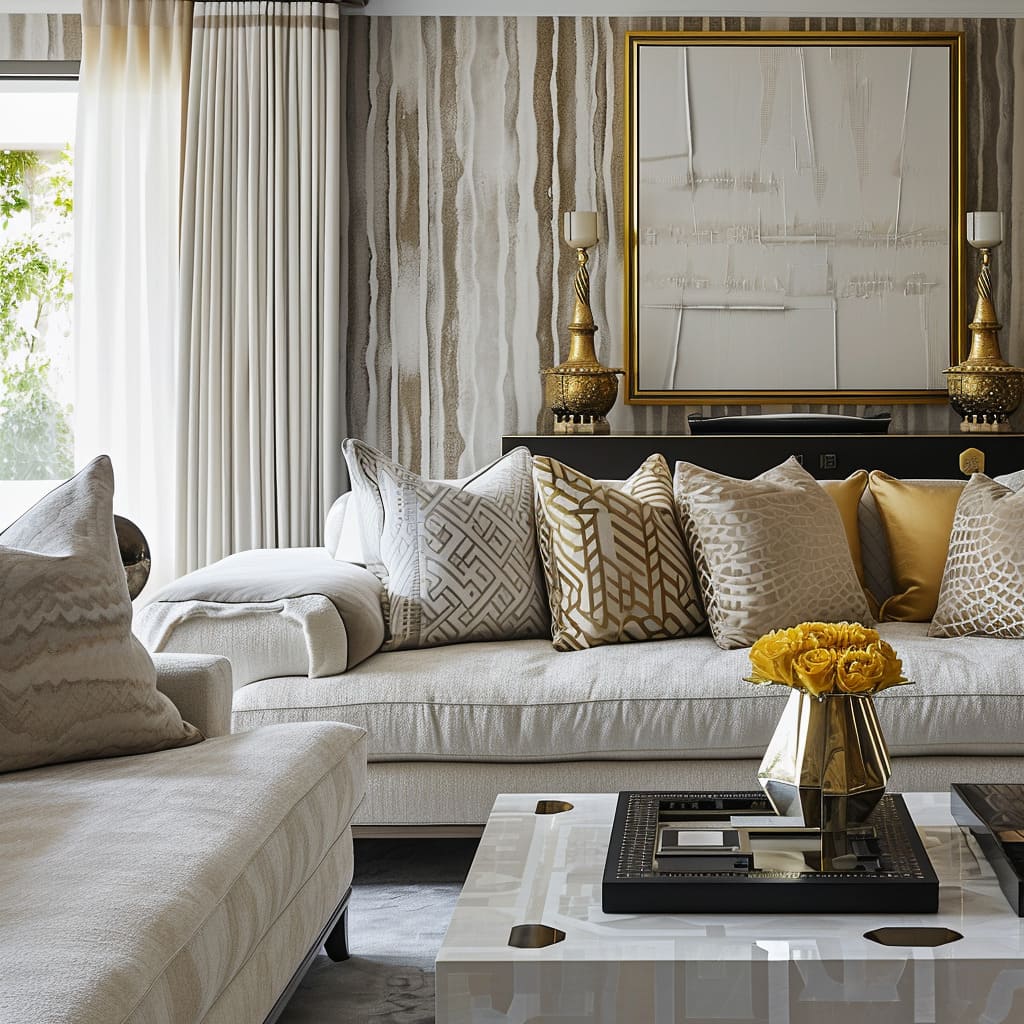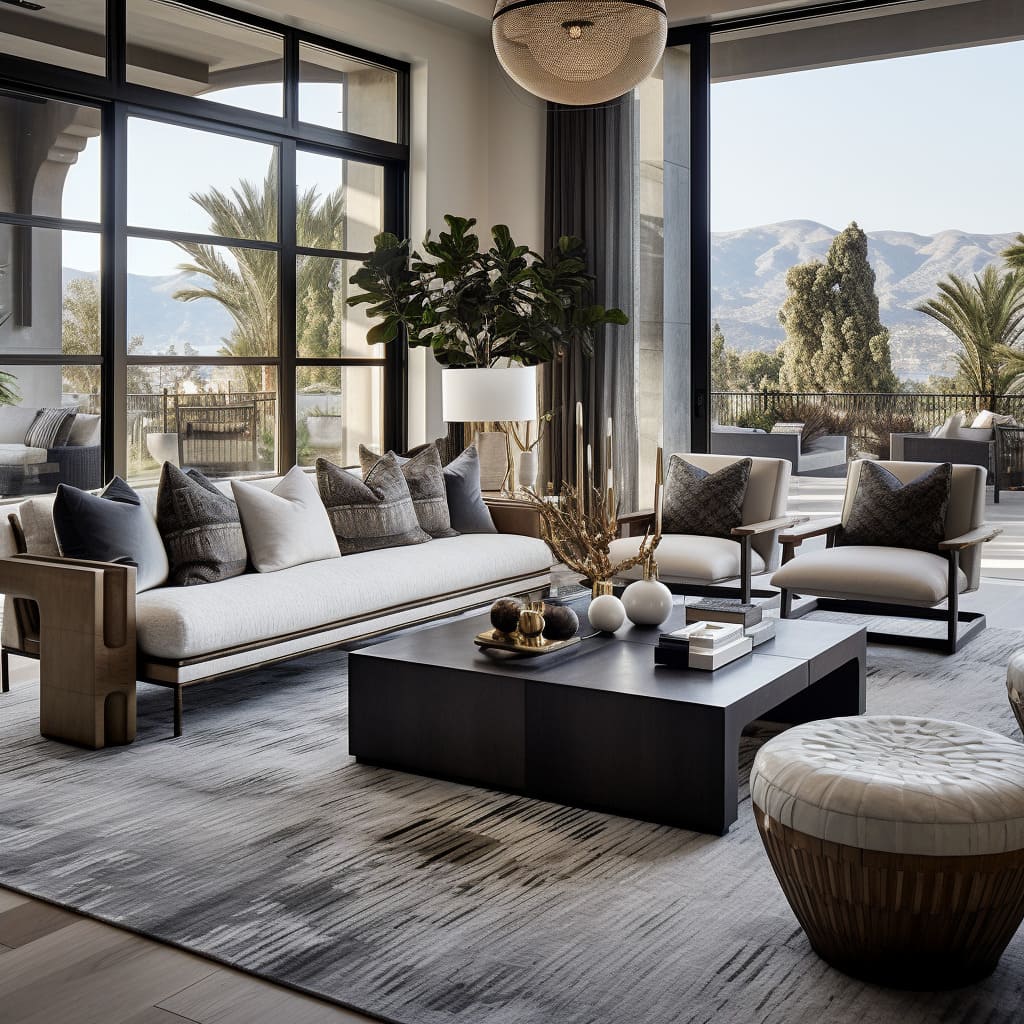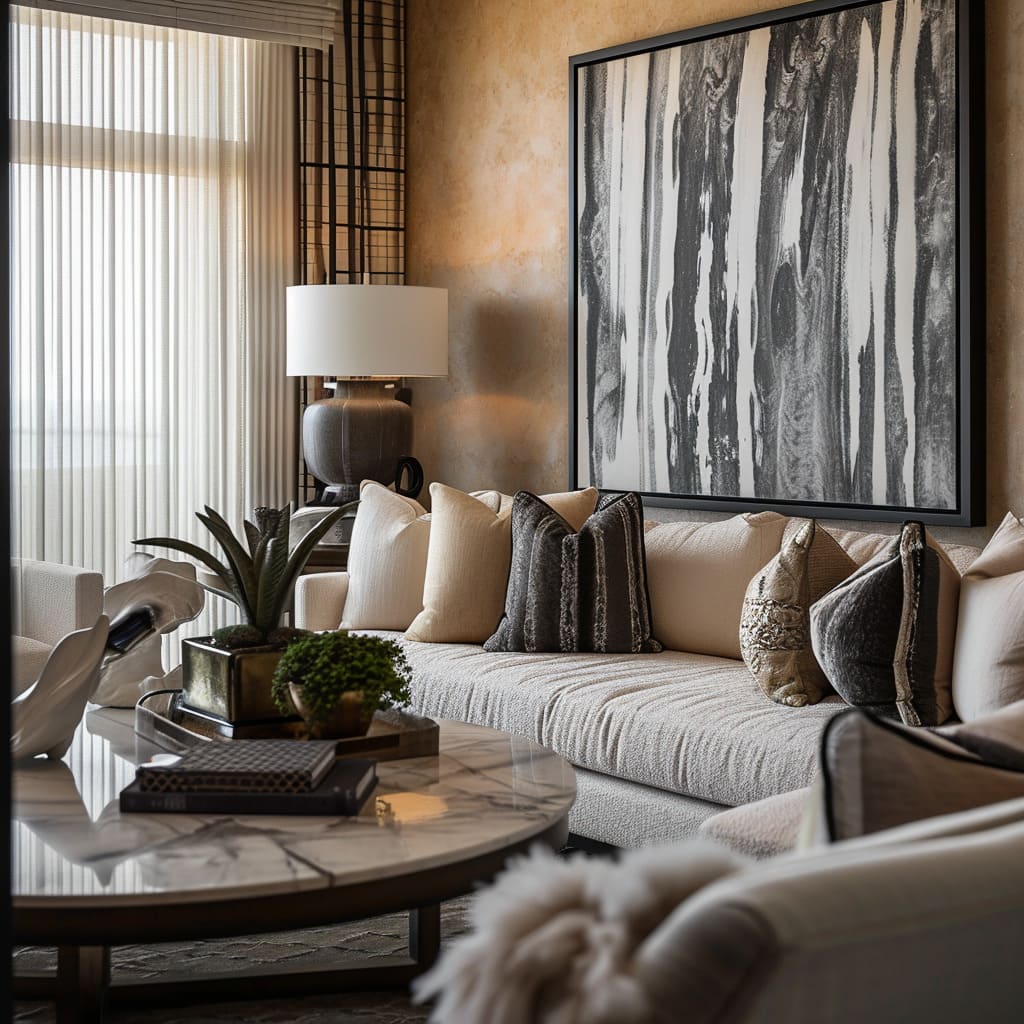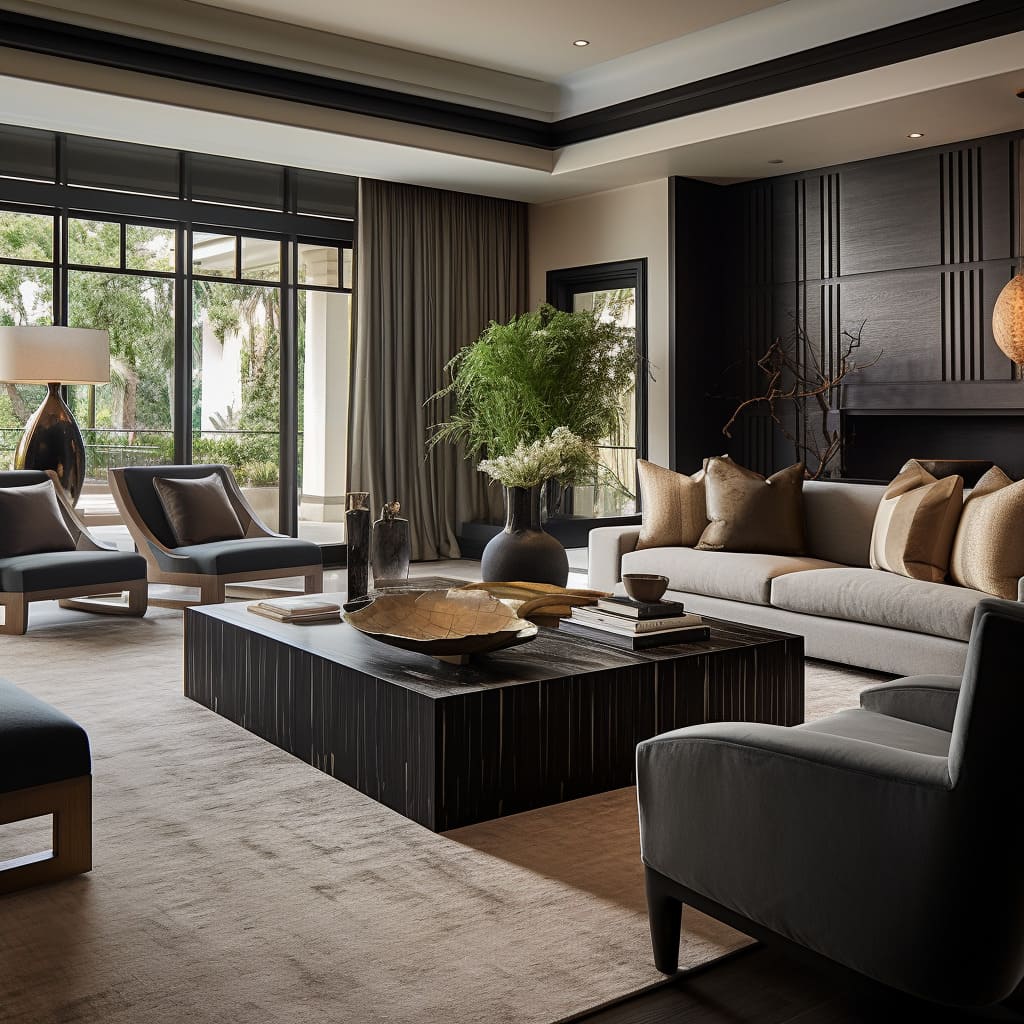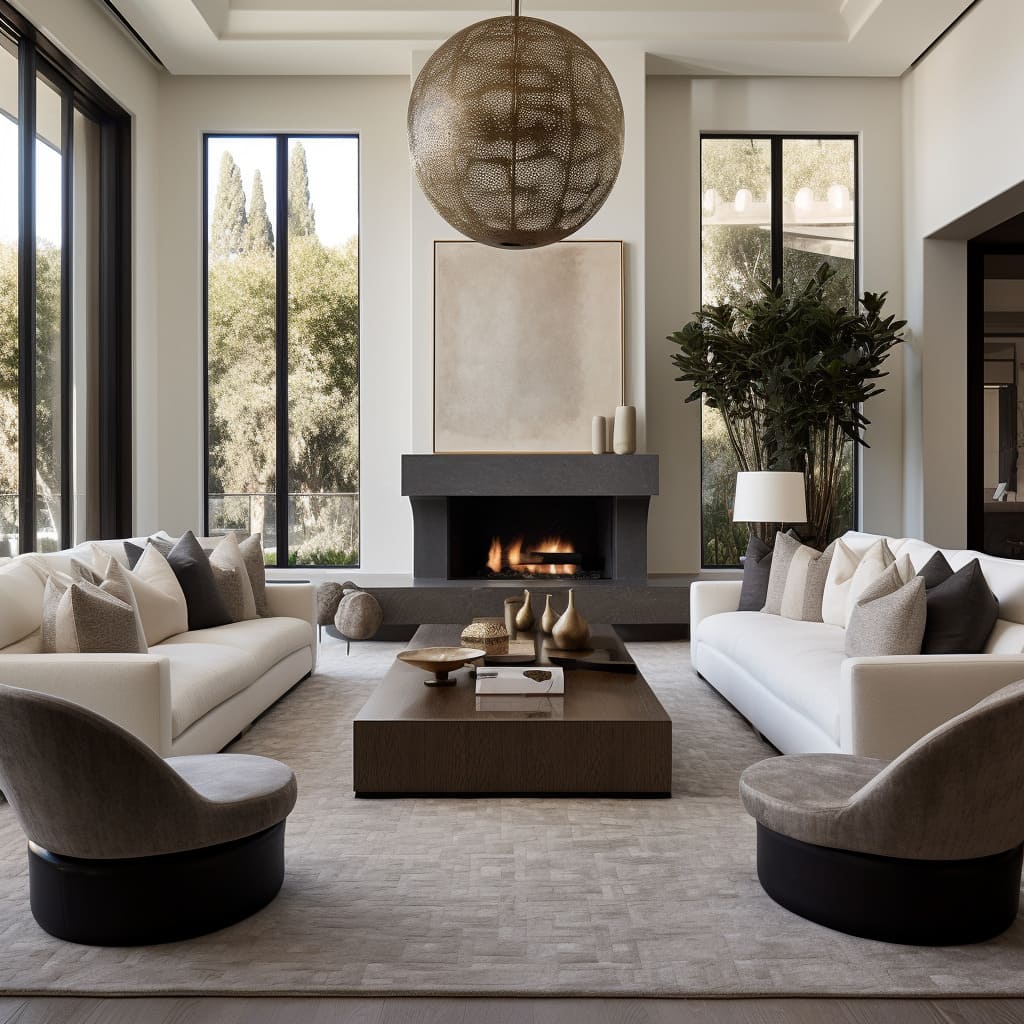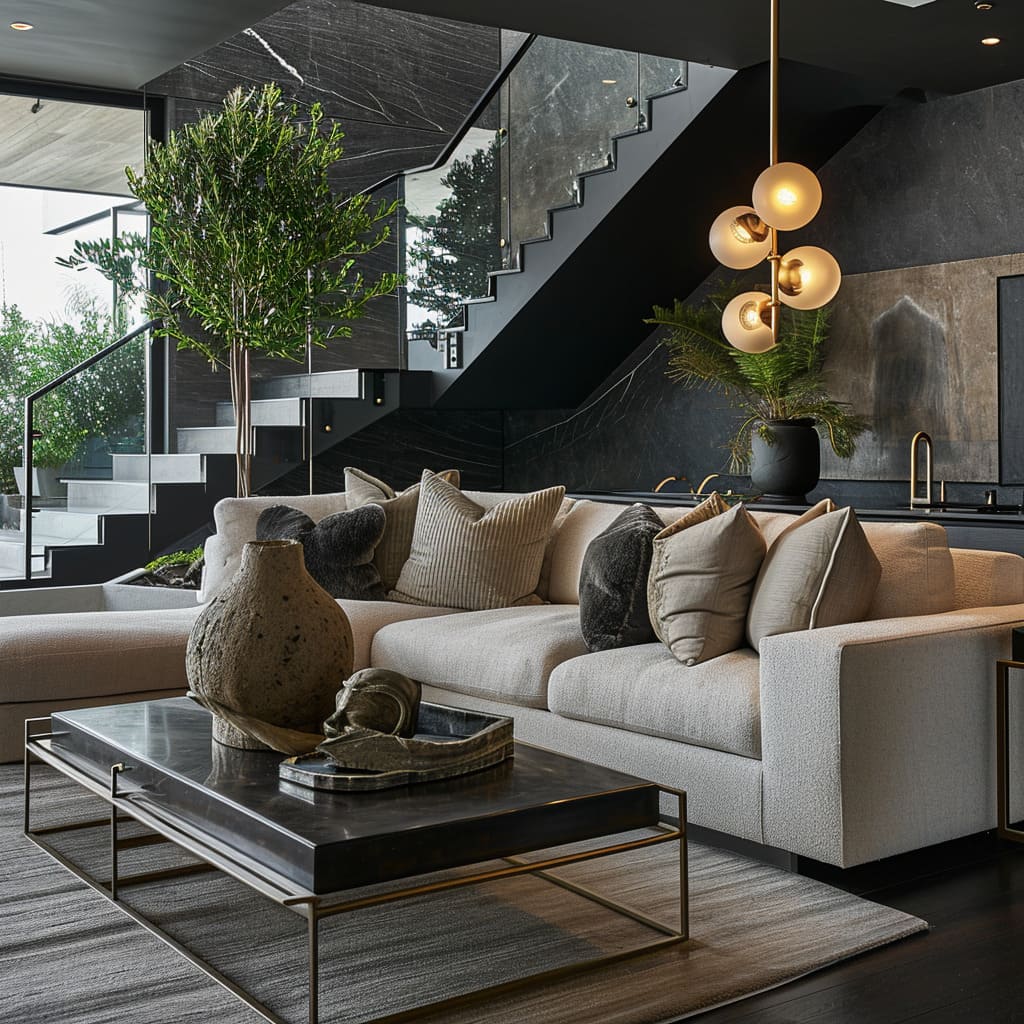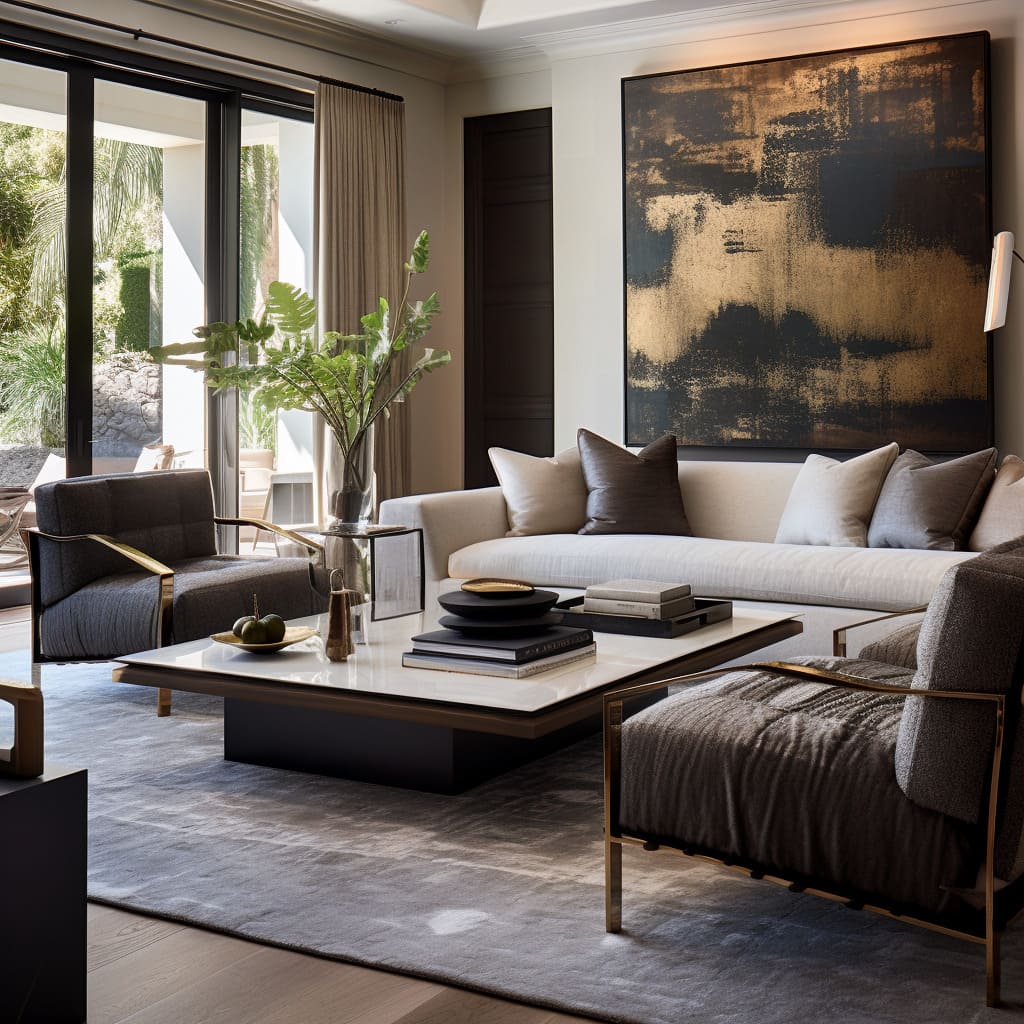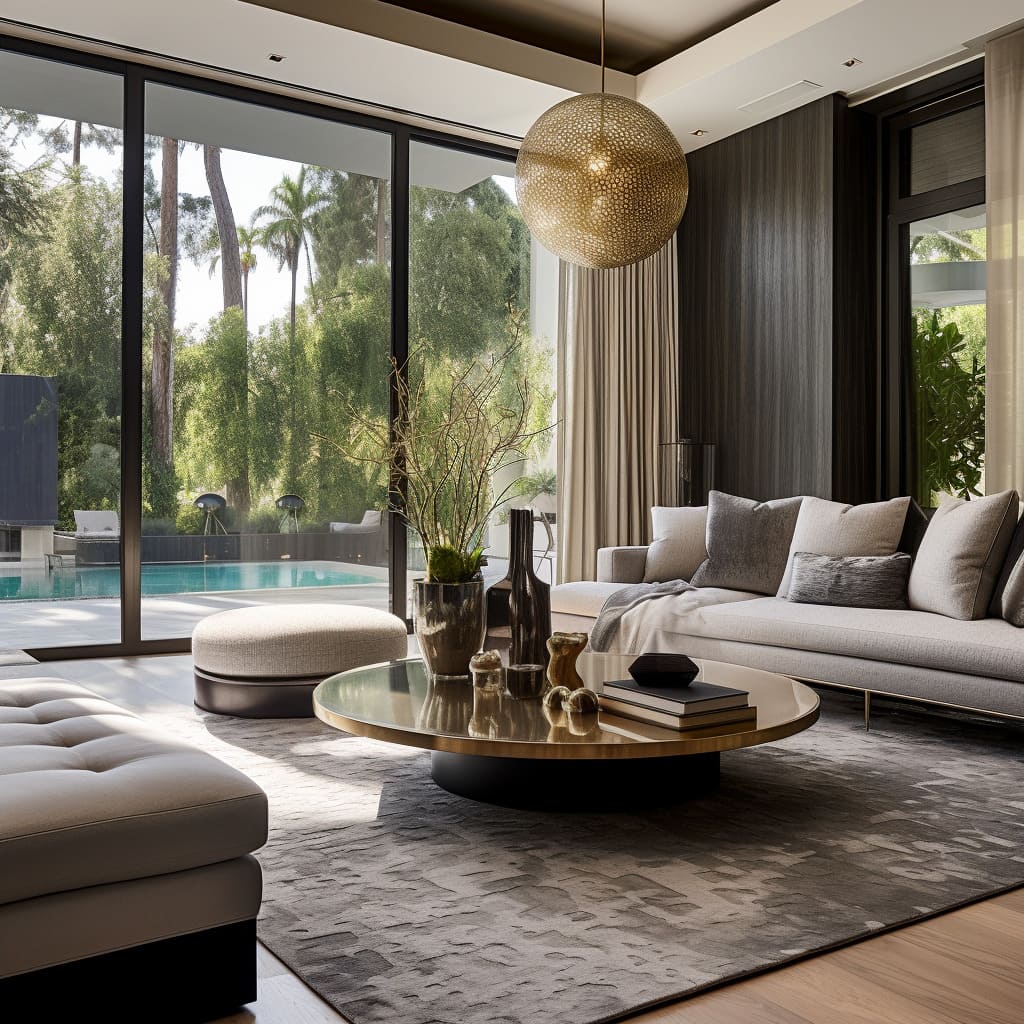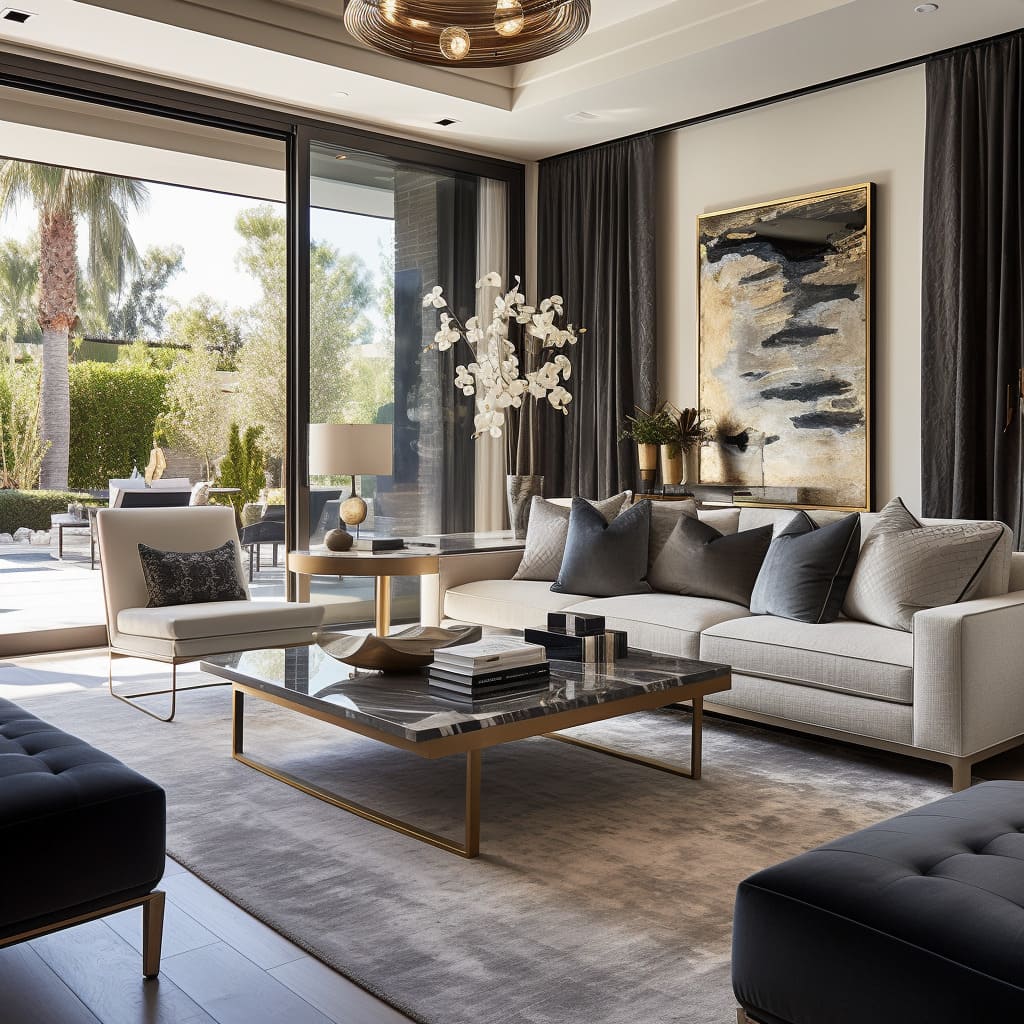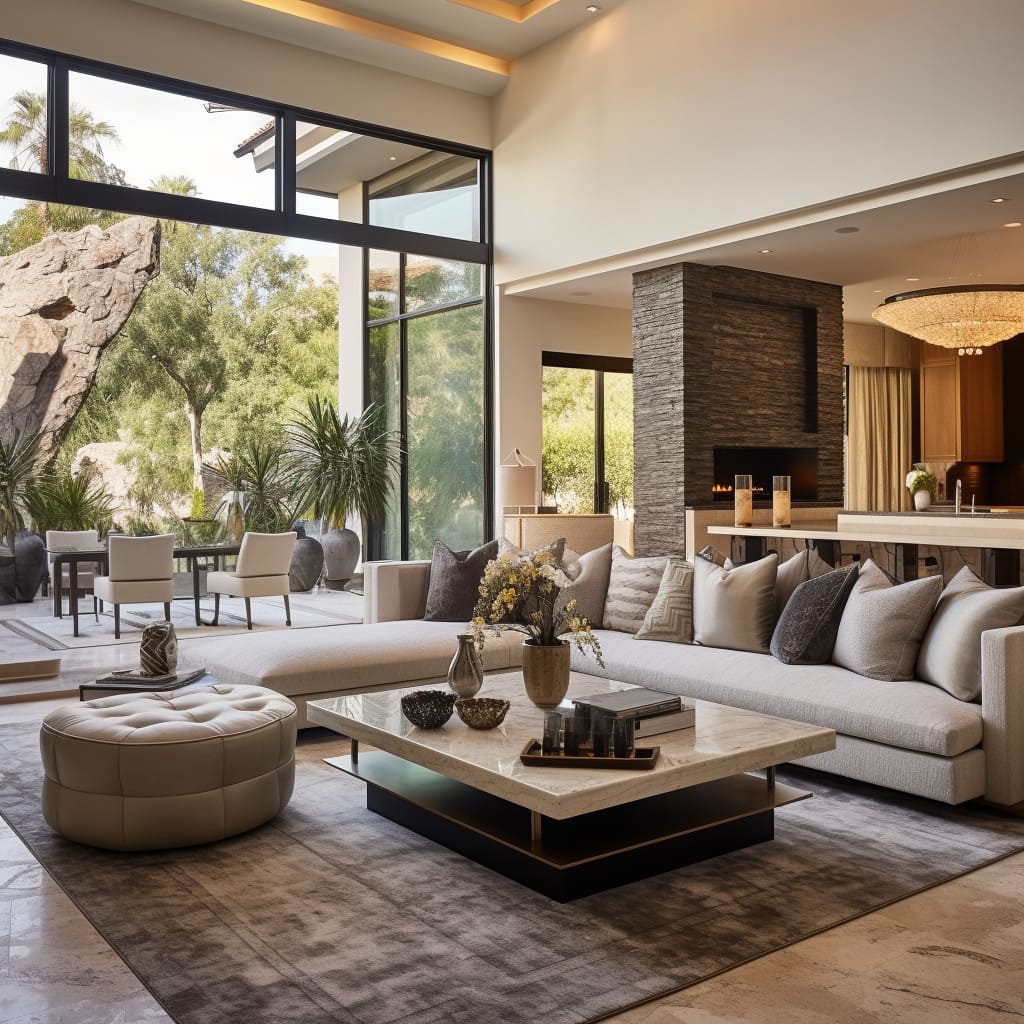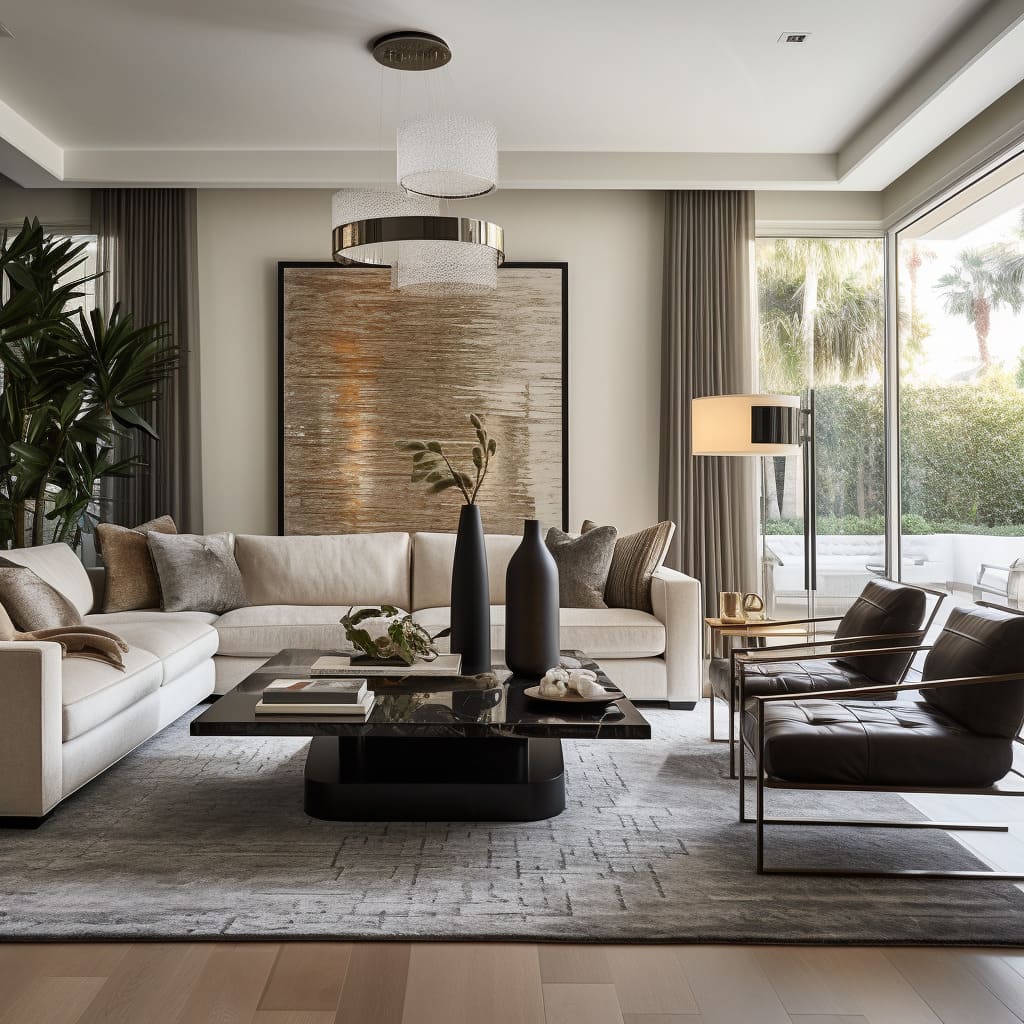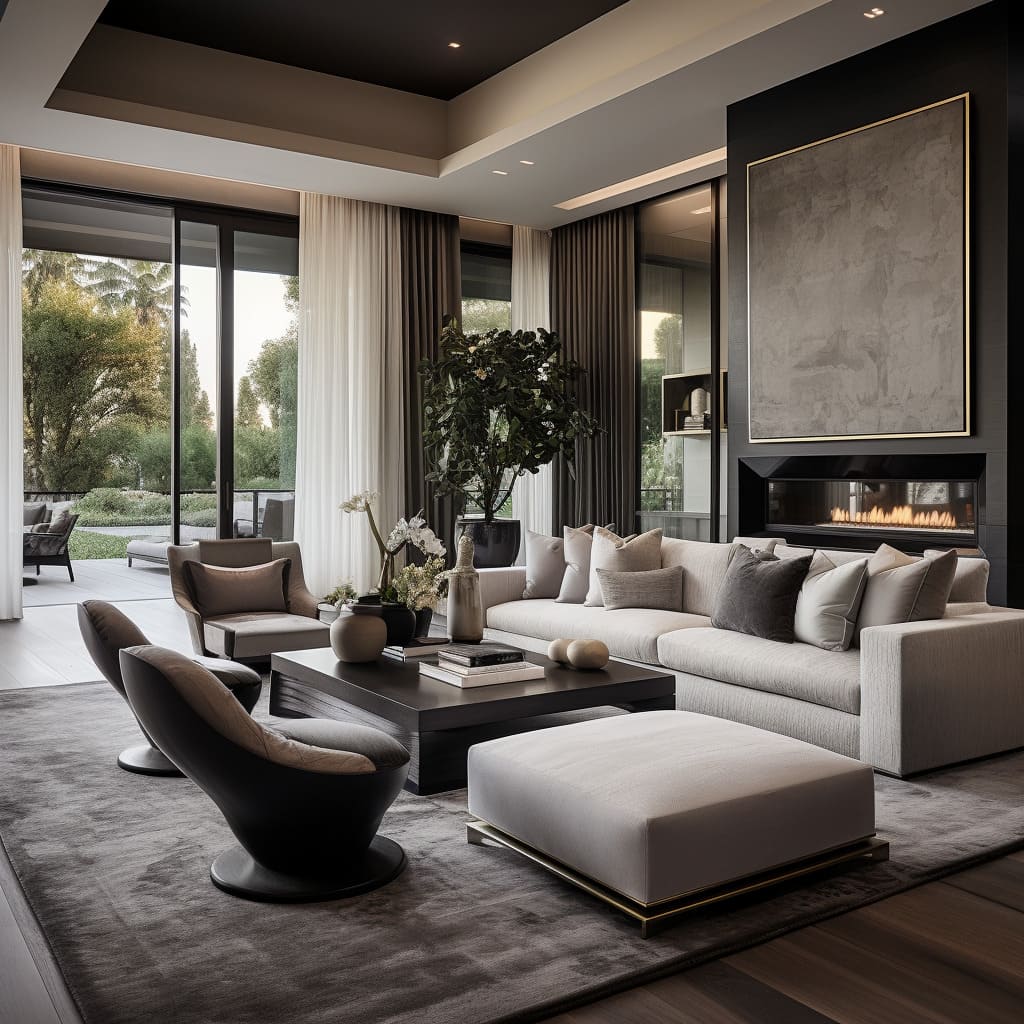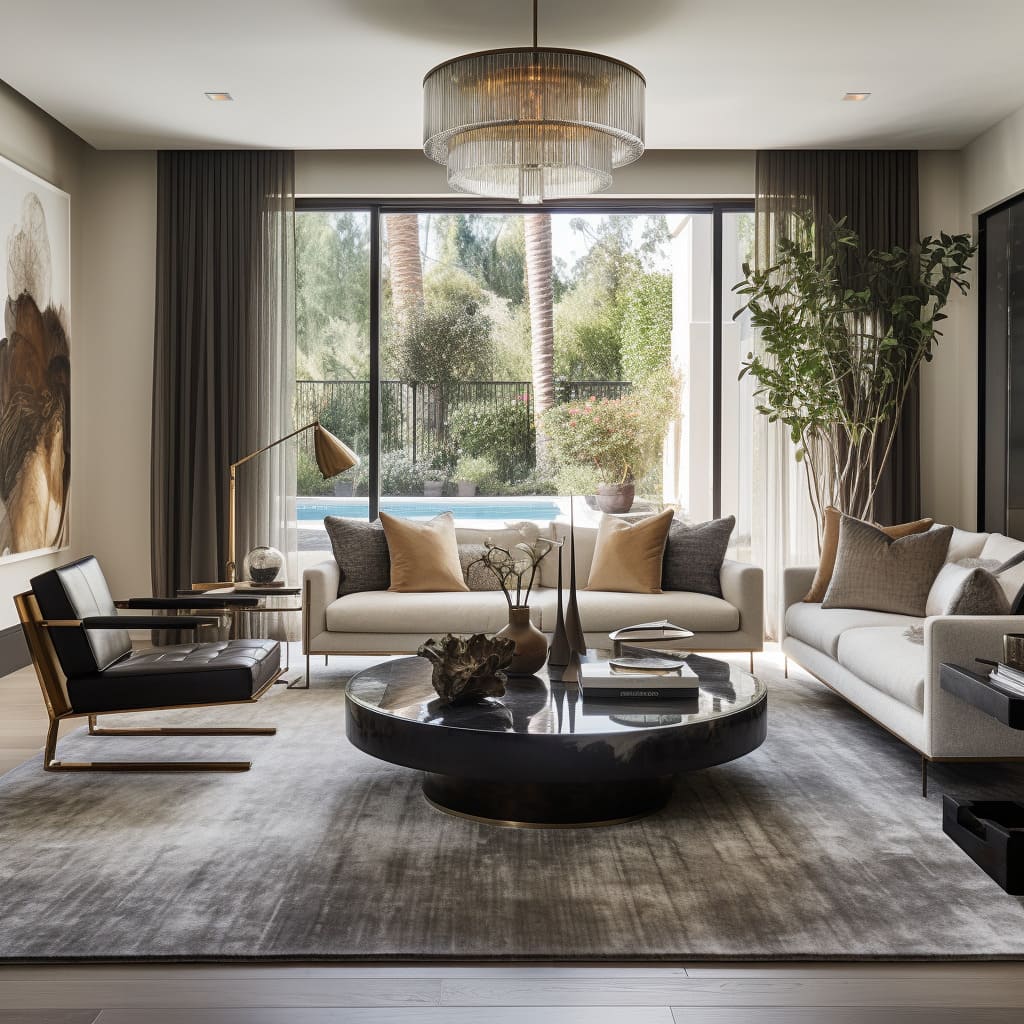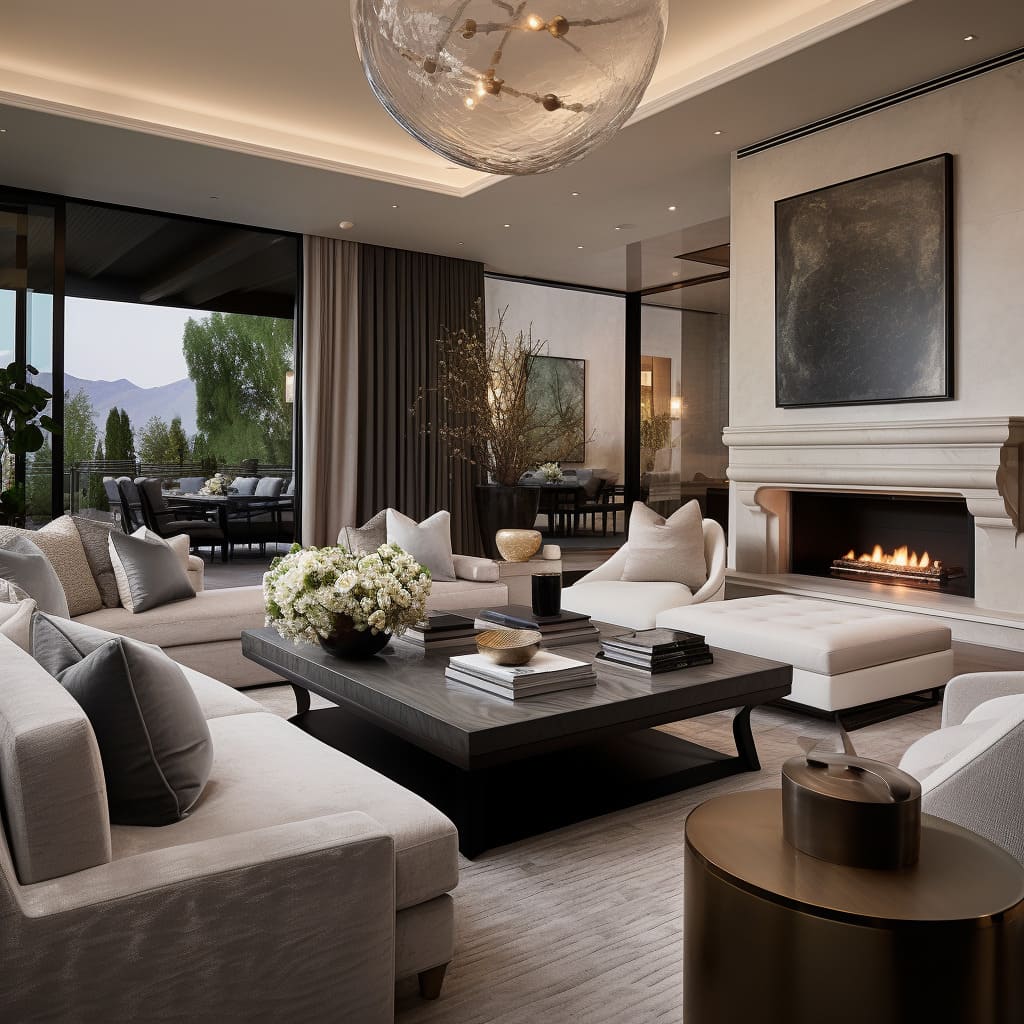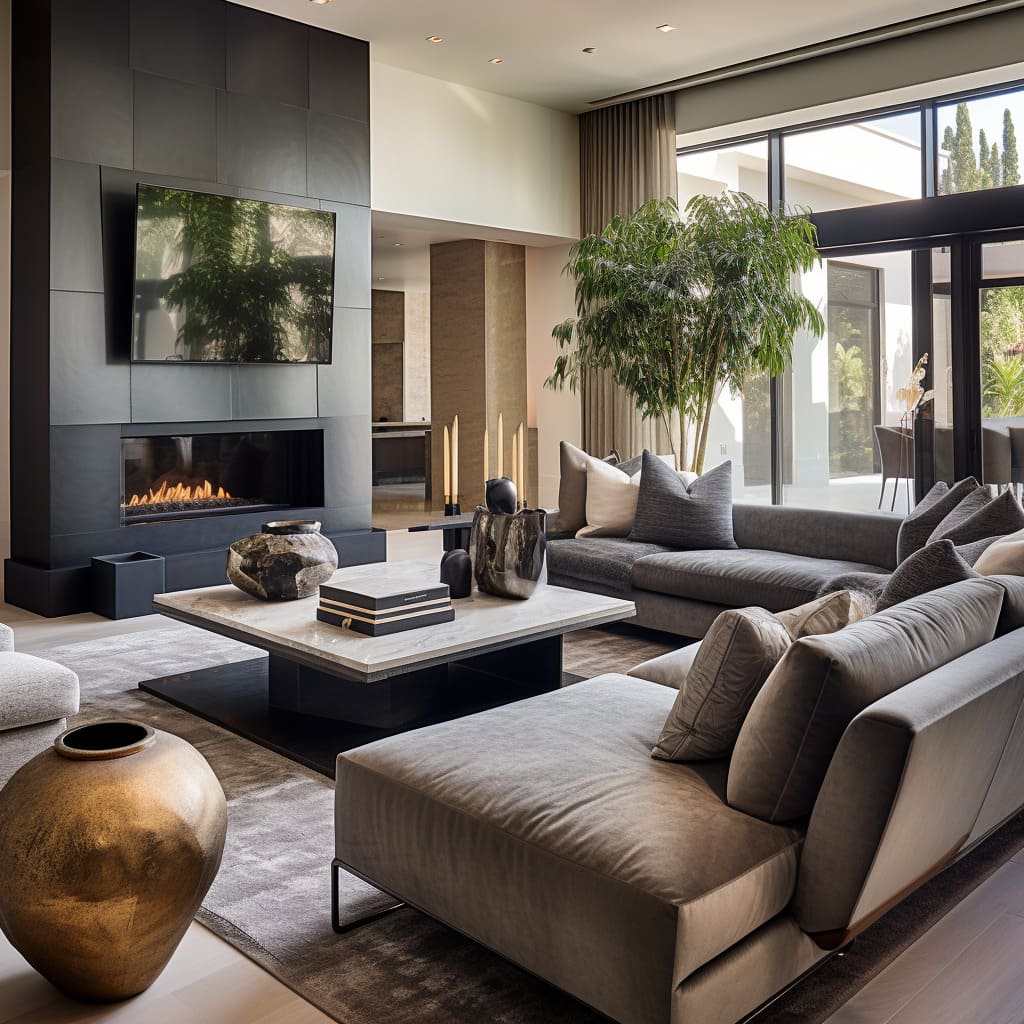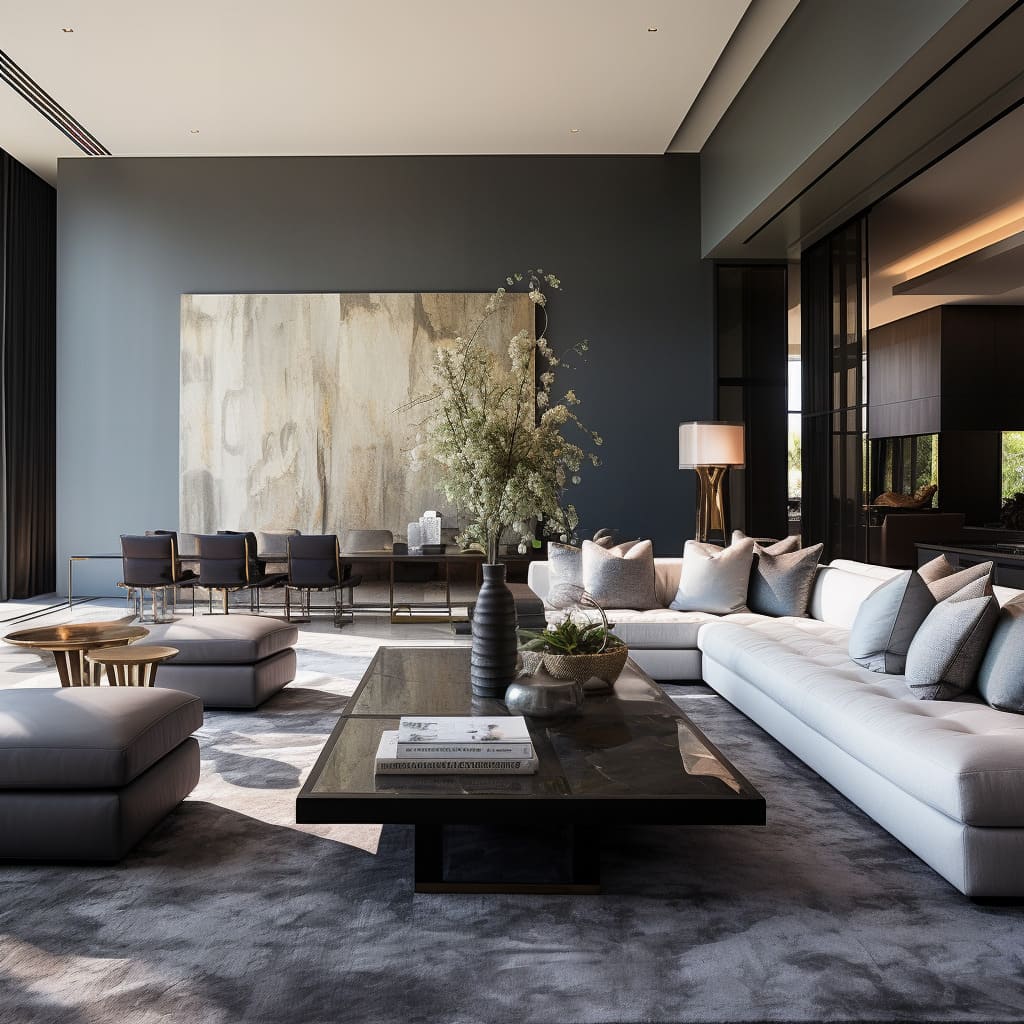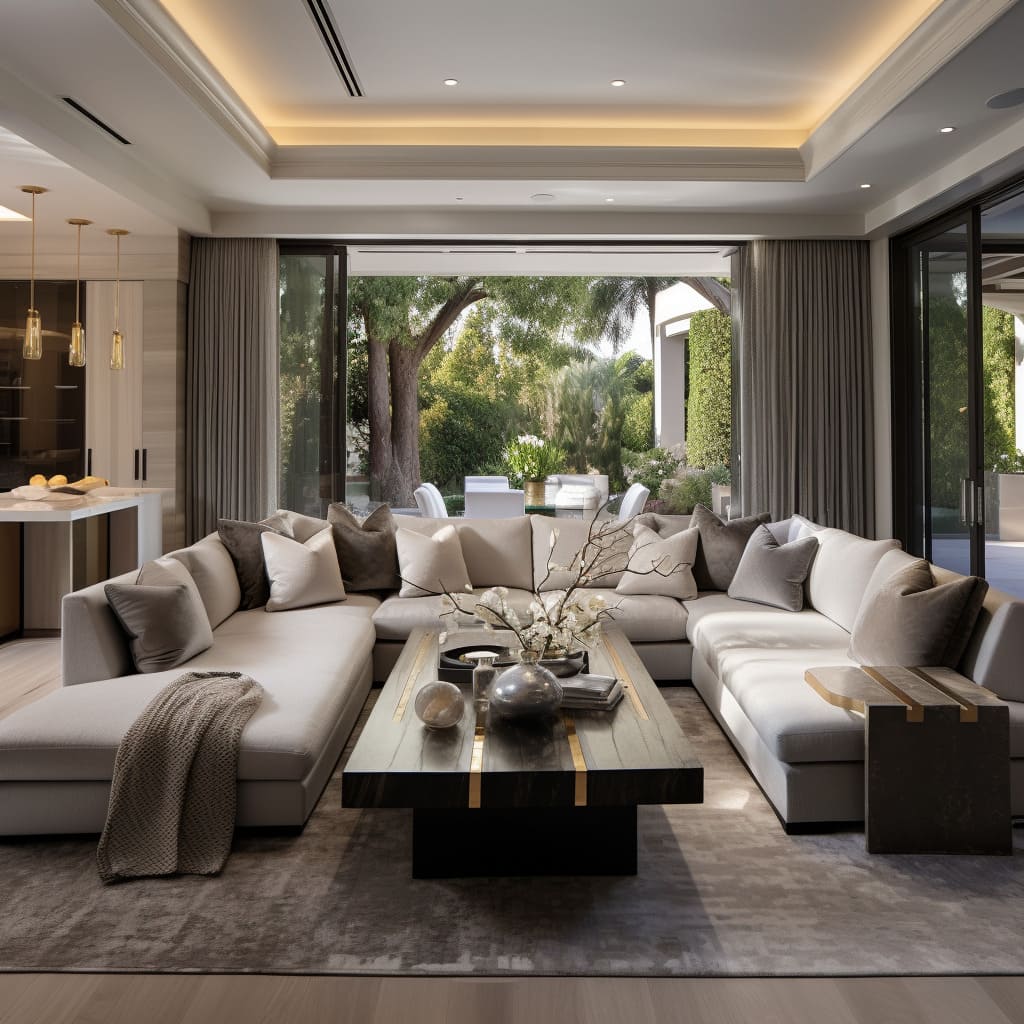The creation of spaces that resonate with both style and substance has always been a coveted art. This article delves into the intricacies of modern interior design, where elegance meets functionality, and luxury is seamlessly intertwined with comfort.
We explore how contemporary designers are pushing the boundaries, crafting interiors that are not just visually stunning but also deeply reflective of individual personalities and lifestyles.
From the strategic use of high-quality materials to the harmonious balance between minimalism and personalization, this article unveils the key elements that define today’s sophisticated interiors. It is an exploration of how spaces can be transformed into more than just aesthetically pleasing areas—they become reflections of the inhabitants’ tastes, preferences, and ways of life.
Through this lens, we invite readers to discover the subtle artistry and deliberate design choices that make modern interior spaces not only beautiful but also uniquely personal and inviting.
Crafting Luxurious Living Environments
This kind of interior designs epitomizes modern luxury, achieved through an elegant color palette, high-quality furniture, and tasteful decor. The design features a warm and inviting atmosphere, anchored by a neutral color scheme of beige, brown, and gray tones.
Central to such space is a large, comfortable seating arrangement. An L-shaped sofa, adorned with plush cushions, serves as the room’s focal point, offering ample space for relaxation.
This is complemented by contemporary swivel lounge chairs, adding a modern flair to the setting.
A prominent feature is a sleek, low-profile coffee table, which rests in front of the sofa. This piece, along with decorative books and objects, injects personality into the space.
The room also boasts an impressive abstract painting, which draws the eye and adds a minimalist touch.
Often the area is warmed by a modern, linear gas fireplace, which enhances both the ambiance and physical comfort of the room. Underfoot, a deep pile rug matches the room’s color scheme, adding texture and comfort, while resting on a seamless light hardwood floor.
Natural light floods in through large floor-to-ceiling windows, offering views of the outside greenery and connecting the interior with the exterior. These windows are complemented by full-length curtains for privacy and light control.
The room’s lighting is thoughtfully designed, featuring a recessed ceiling with subtle lighting that accentuates architectural features and provides a soft glow in the evenings. This, along with other strategically placed light sources, creates a warm and inviting atmosphere.
Blending Architecture and Decor in Modern Luxury
The seamless integration of architectural features and interior decor creates a sophisticated and cohesive space. The room’s architecture is marked by clean lines and a spacious layout, with high ceilings enhancing the sense of openness and luxury.
A standout feature is the multi-level tray ceiling with recessed lighting, adding depth and ambiance to complement the modern aesthetic.
A key architectural element is the extensive use of glass, particularly in the floor-to-ceiling windows. These windows not only frame the outdoor view but also invite natural light into the space, effectively merging the indoors with the outdoors and visually expanding the living area.
See how large windows are transforming home spaces into indoor-outdoor havens in our exploration of modern house architecture.
Symmetry and balance are crucial in such design. Furniture and decor are strategically placed to ensure equilibrium and flow.
A central, large sofa, complemented by swivel chairs and a chaise or secondary seating area, exemplifies this balance. Decorative items and plants add color and life, maintaining the room’s symmetry.
If there is a fireplace, then that wall stands out as both a functional and artistic feature. Its contrasting color against the lighter walls highlights its sleek, modern design, while an abstract painting above it serves as a visual anchor and focal point.
The flooring choice, featuring a plush rug over hardwood, not only adds texture and warmth but also defines the living area within the larger space. The rug’s color harmonizes with the furniture and the overall neutral palette, enhancing the luxurious feel.
Attention to Detail and High-quality Materials
Attention to detail and the use of high-quality materials are pivotal in creating a luxurious atmosphere. Each material is chosen not just for its aesthetic value but also for its texture and durability, contributing to the overall sophistication of the space.
Hardwood floors lay the foundation for timeless elegance. Their light hue complements the neutral color scheme and seamlessly connects different areas of the house.
A plush area rug over these floors adds a layer of luxury and comfort, with its deep pile inviting a tactile, barefoot experience.
The furniture selection further reflects this commitment to quality. Sofas and chairs are upholstered in high-grade fabrics, ensuring durability and comfort.
The materials, ranging from the fabrics of the seating to the leather of the swivel chairs, demonstrate a dedication to superior quality.
Decor items, including books, vases, and decorative orbs, are thoughtfully chosen to enhance the room’s aesthetic. These elements are selected not only for functionality but also for their visual appeal, featuring a variety of textures and finishes that add depth to the space.
Curtains framing the large windows contribute both softness and luxury. Made from high-quality materials that drape elegantly, they offer practical benefits like privacy and light control while adding to the room’s elegance.
Lighting plays a crucial role in highlighting the room’s architectural beauty. Recessed ceiling lights cast a soft glow, accentuating the space’s features, while additional light sources like lamps or wall sconces provide task lighting and enhance the ambiance.
The artwork above the fireplace is deliberately chosen for its abstract form and subtle colors, resonating with the room’s color scheme. Its frame, with a subtle metallic trim, adds a touch of opulence that complements rather than dominates the space.
Minimalism with a Personal Touch in Interior Design
Such interior design strikingly balances personalization with minimalism, creating an environment that is both lived-in and uncluttered. The approach is minimalist, adhering to the ‘less is more’ philosophy in furnishings and decorations.
The space avoids overcrowding, allowing each item to be distinct and the overall design to resonate more powerfully. This minimalism highlights the room’s architectural elements, like high ceilings and expansive windows.
Despite the minimalist approach, the room doesn’t lack personal touches. Items like books, vases, and decorative orbs on the coffee table, alongside a large plant near the fireplace, inject a sense of personal style and natural elements.
These additions offer glimpses into the inhabitants’ personalities without overwhelming the space.
An artwork above the fireplace embodies this minimalist theme with its abstract, neutral-colored design, enhancing the room’s aesthetic without dominating it. The simplicity of the artwork contributes to the room’s calming and uncluttered atmosphere.
In line with minimalism, the focus is on the quality of materials and furnishings rather than their quantity. Each piece is selected for its design merit and quality craftsmanship, emphasizing the minimalist ideal of fewer, but finer, items.
The design likely incorporates clever storage solutions, such as built-in cabinetry or multi-functional furniture, keeping everyday items out of sight. This maintains the clean lines and uncluttered appearance central to minimalist design.
Space for movement is a crucial aspect of this style. Generous spacing between furniture pieces ensures ease of movement and an open, airy feel, allowing the room’s design to be appreciated from multiple angles.
Lastly, the balanced composition in furniture and decor arrangement, with a focus on symmetry and alignment, instills a sense of order and tranquility, key to minimalist interiors.
In conclusion, this exploration into modern interior design reveals a profound understanding of how spaces can be transformed into sophisticated, inviting environments. By skillfully balancing minimalism with personal touches, employing high-quality materials, and focusing on strategic design elements, this approach to interior design creates rooms that are not only aesthetically pleasing but also highly functional and comfortable.
The harmonious integration of architectural features with interior decor, the emphasis on detail and quality, and the careful blend of personalization within a minimalist framework, all contribute to spaces that speak volumes about the inhabitants’ tastes and lifestyles. These rooms are more than just living areas; they are personalized havens that reflect a nuanced appreciation of modern luxury and comfort.
As we move forward, this approach to interior design stands as a testament to the enduring power of thoughtful design. It underscores the idea that the best spaces are those that harmoniously blend form and function, elegance and comfort, simplicity and warmth.
In doing so, it sets a standard for contemporary interior design that is both inspiring and attainable.


